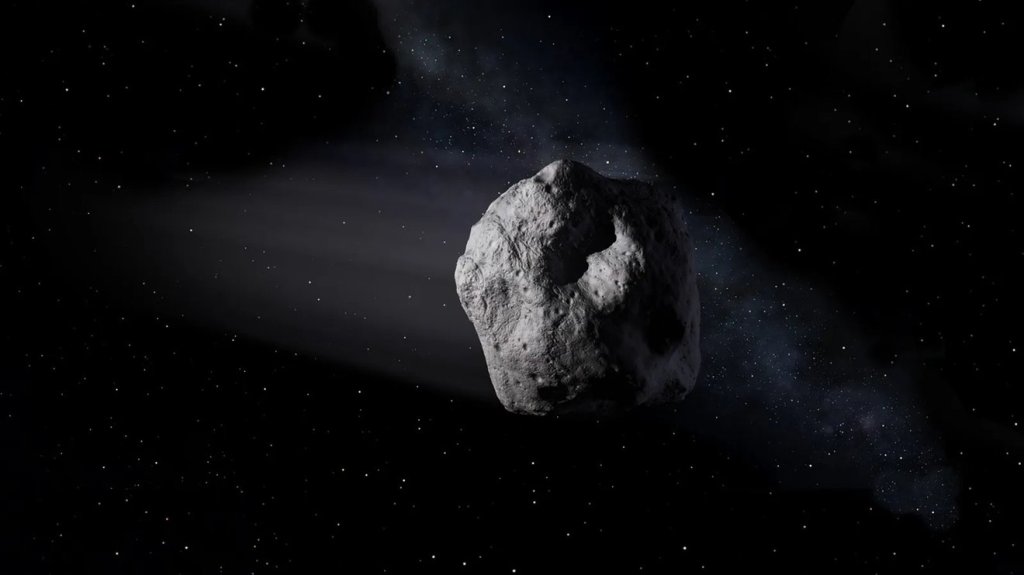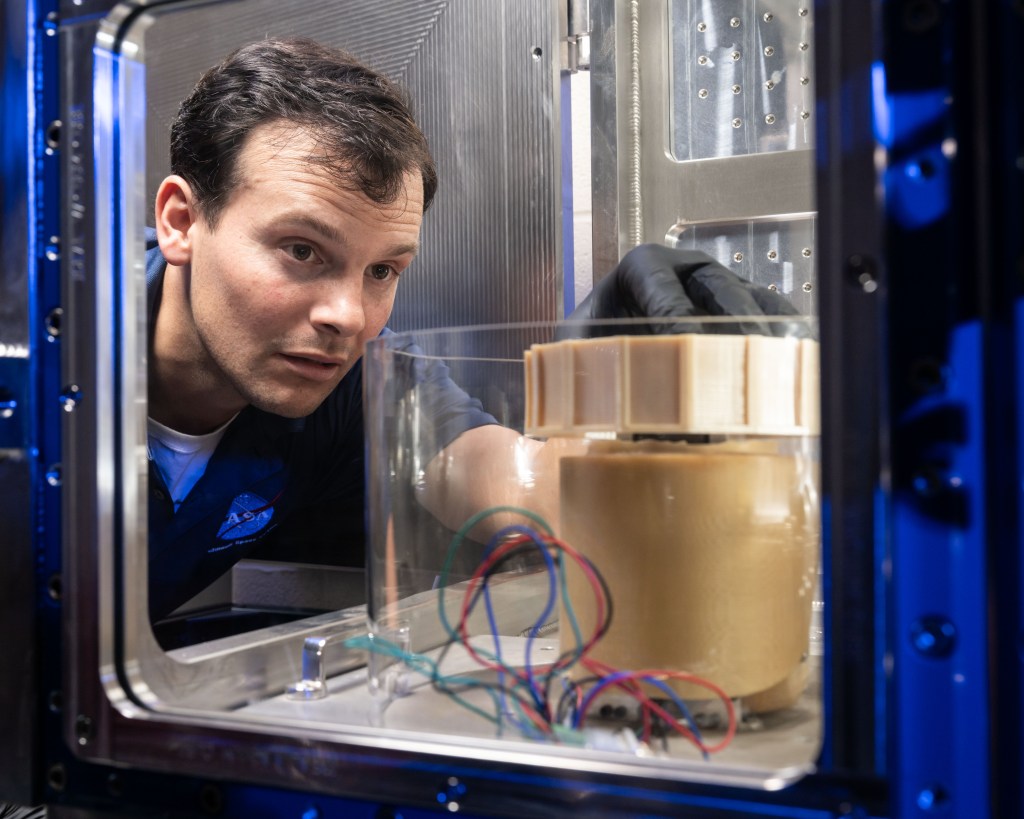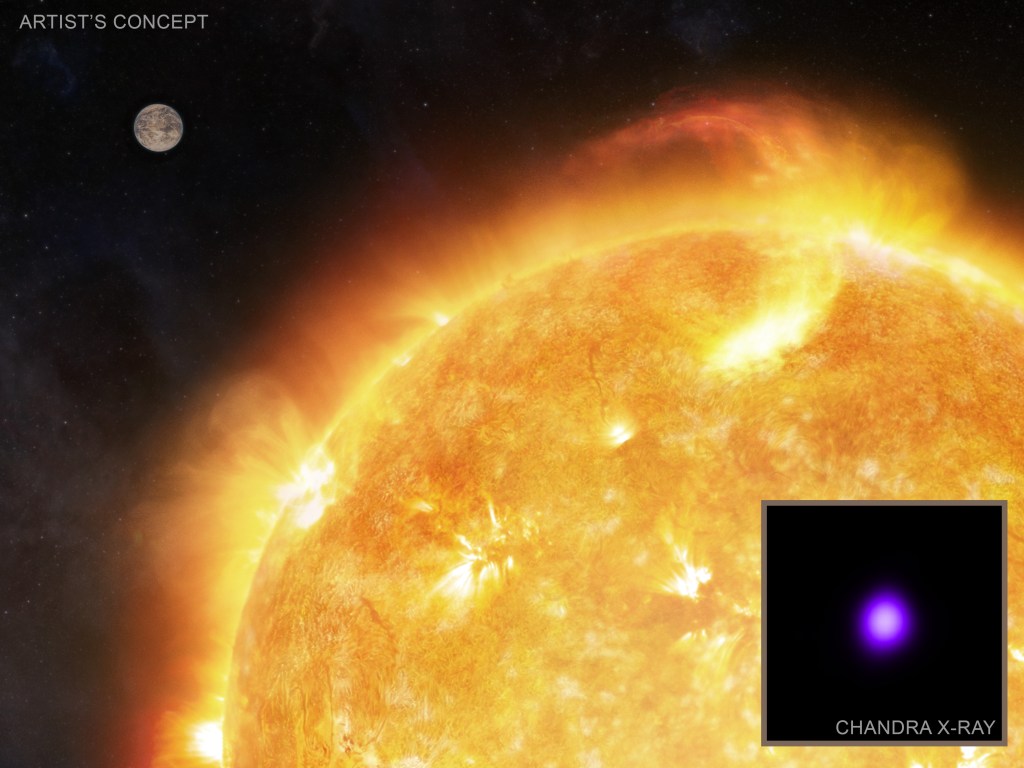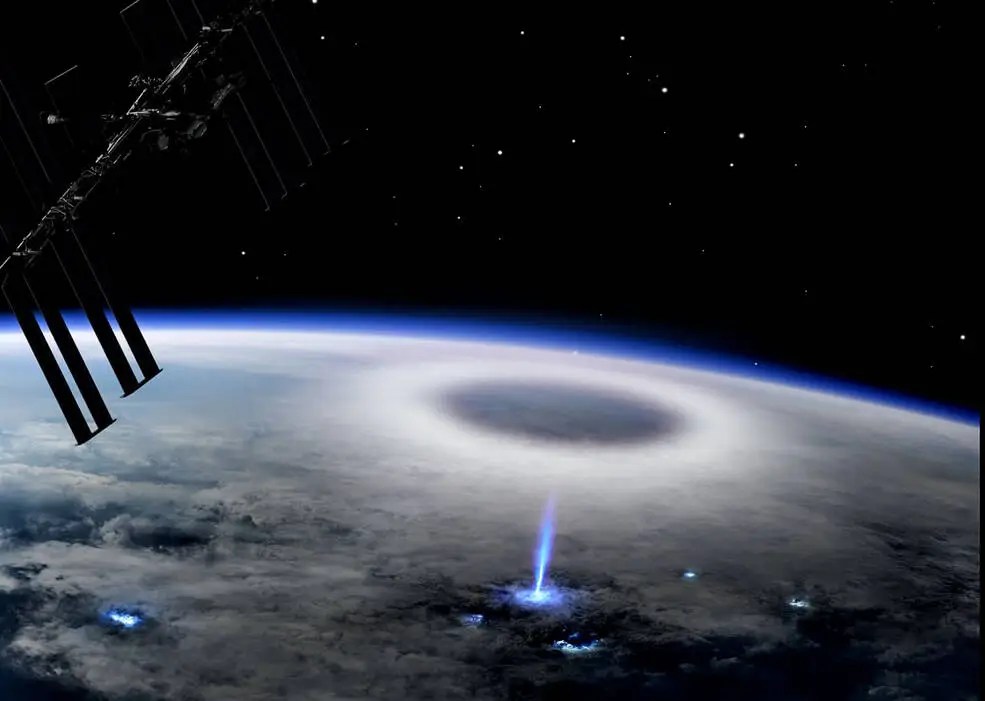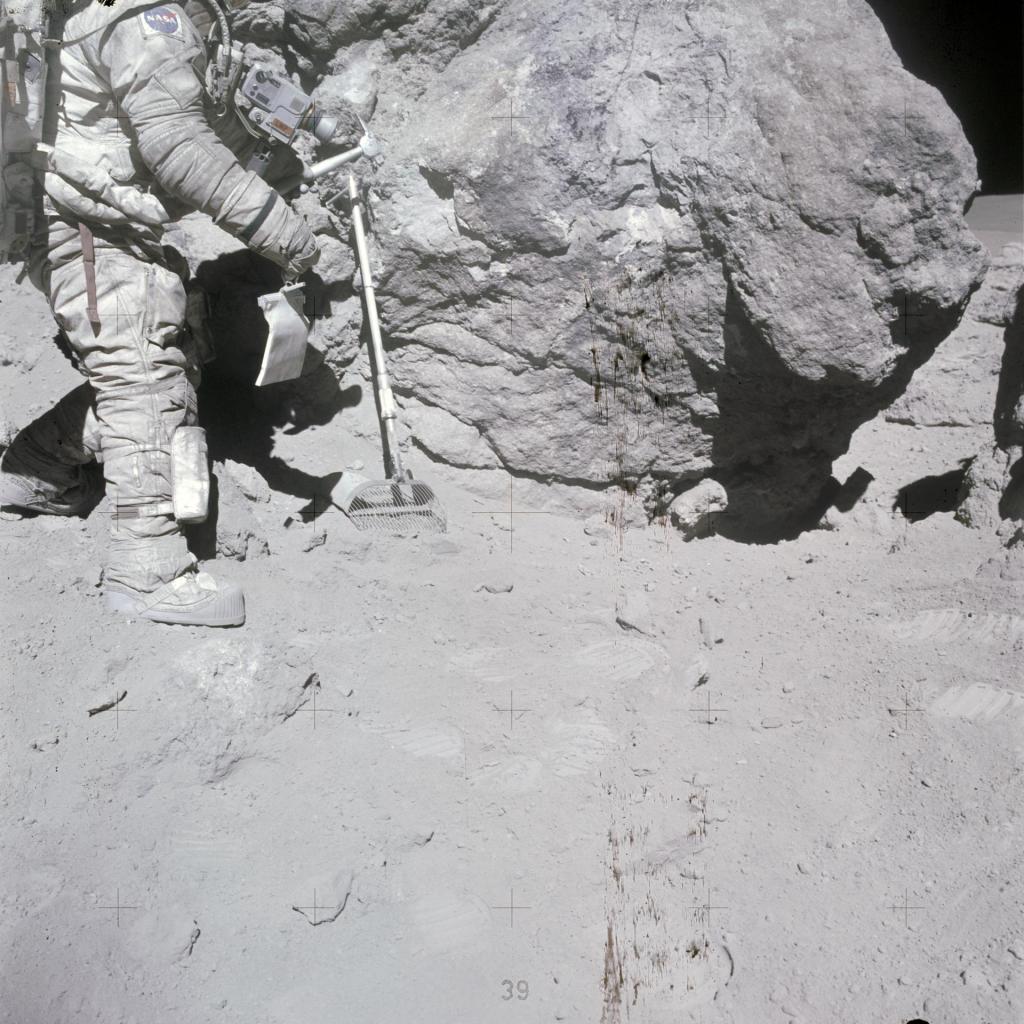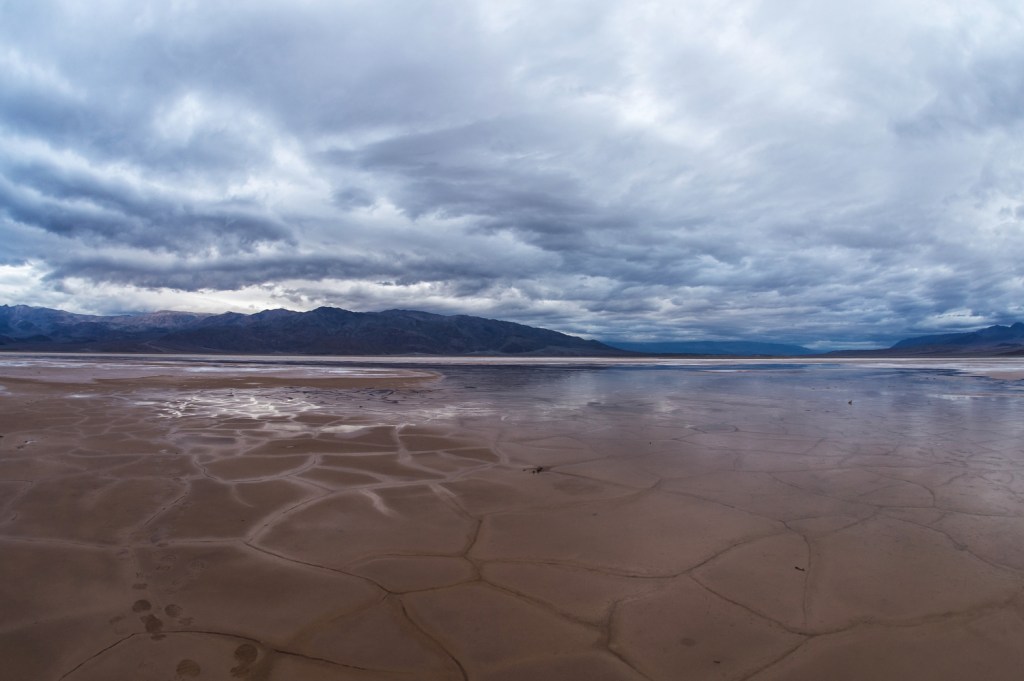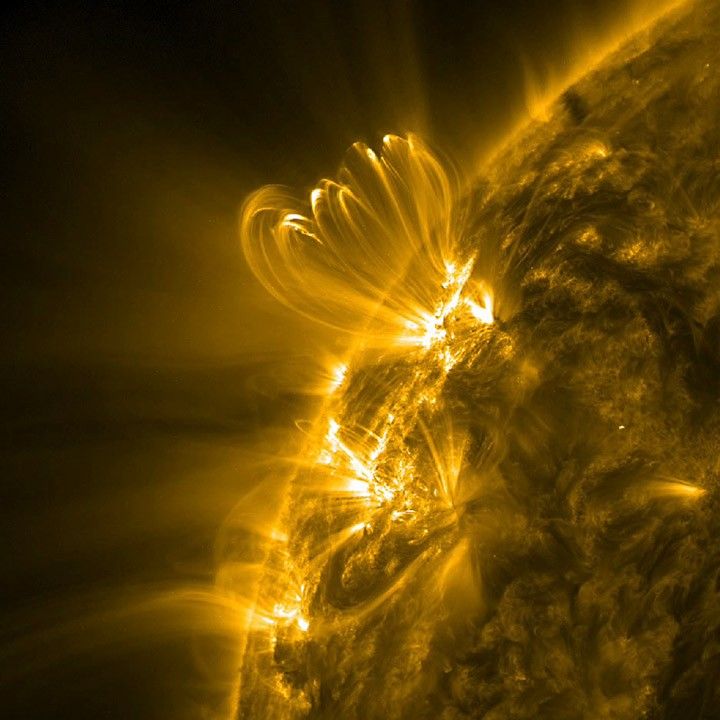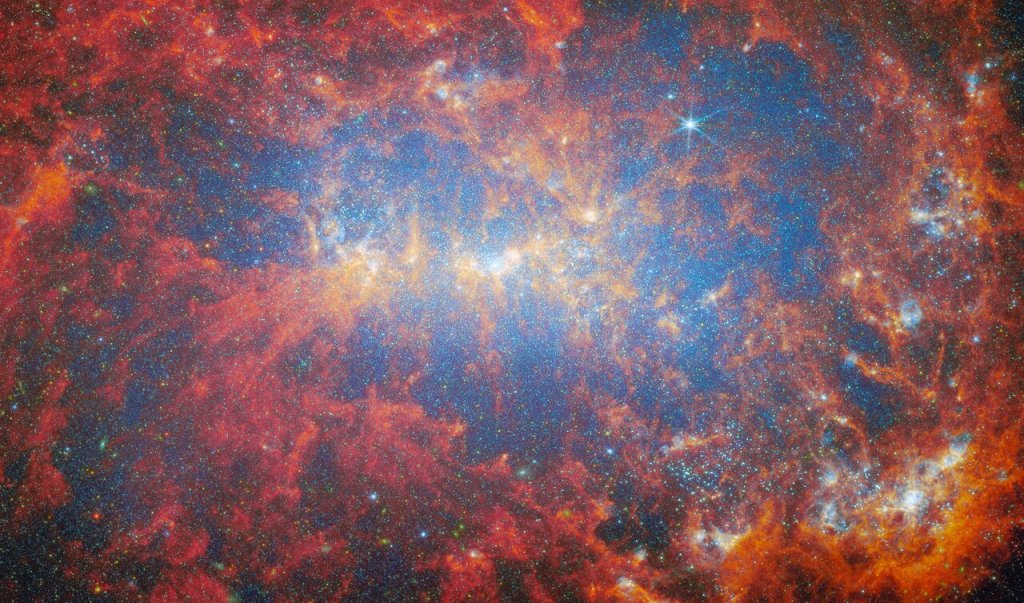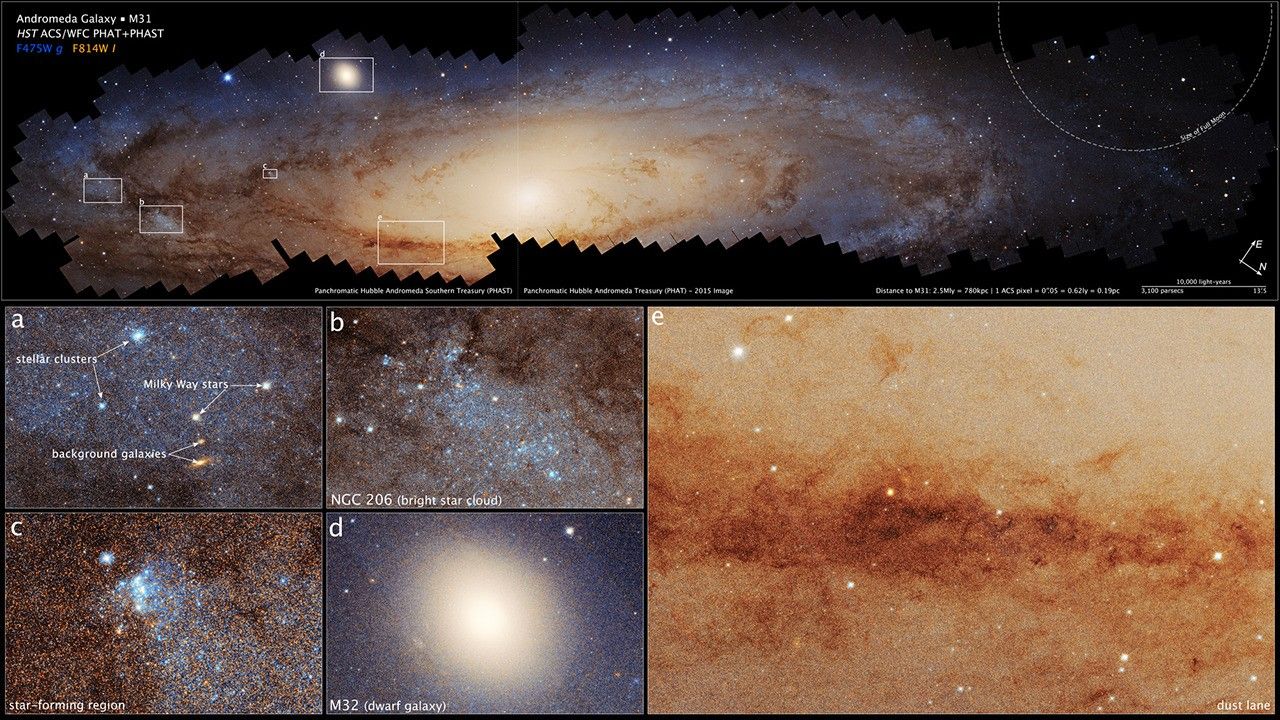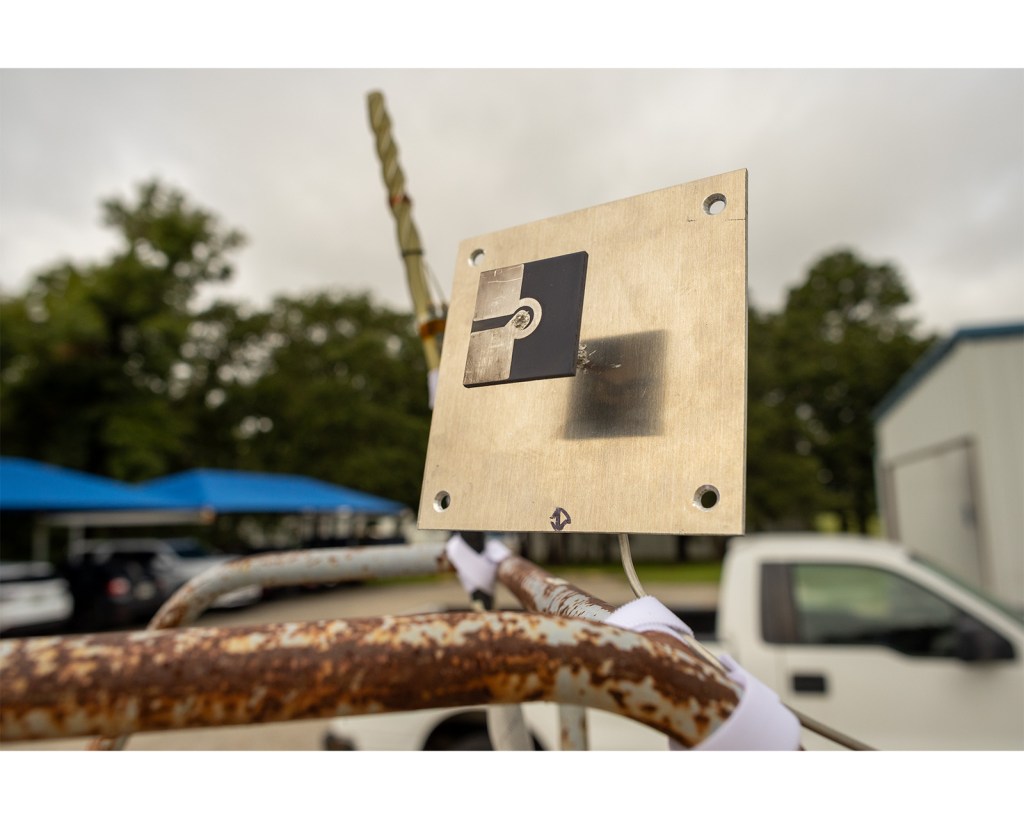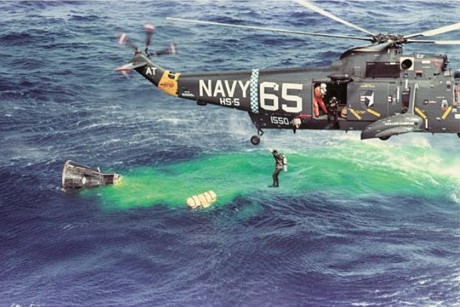This series of articles features the 13 unique individuals who have led NASA’s Johnson Space Center (JSC) in Houston during the past 60 years and continue to lead us into the future of human space exploration. The first three installments described the Project Management Building and the center’s first five directors through 1993. This article, covering the period from 1994 to 2001, focuses on JSC’s sixth and seventh directors, Carolyn L. Huntoon and George W.S. Abbey, as they led the center up to the start of permanent human occupancy of low-Earth orbit. In addition to making high-level decisions to maintain America’s leadership in human spaceflight, JSC’s center directors’ many varied activities also include greeting astronauts after their return from space, dedicating new facilities, and meeting with local politicians, world leaders, and celebrities. For more information about the directors who led the center, please visit Johnson Space Center Directors | NASA.
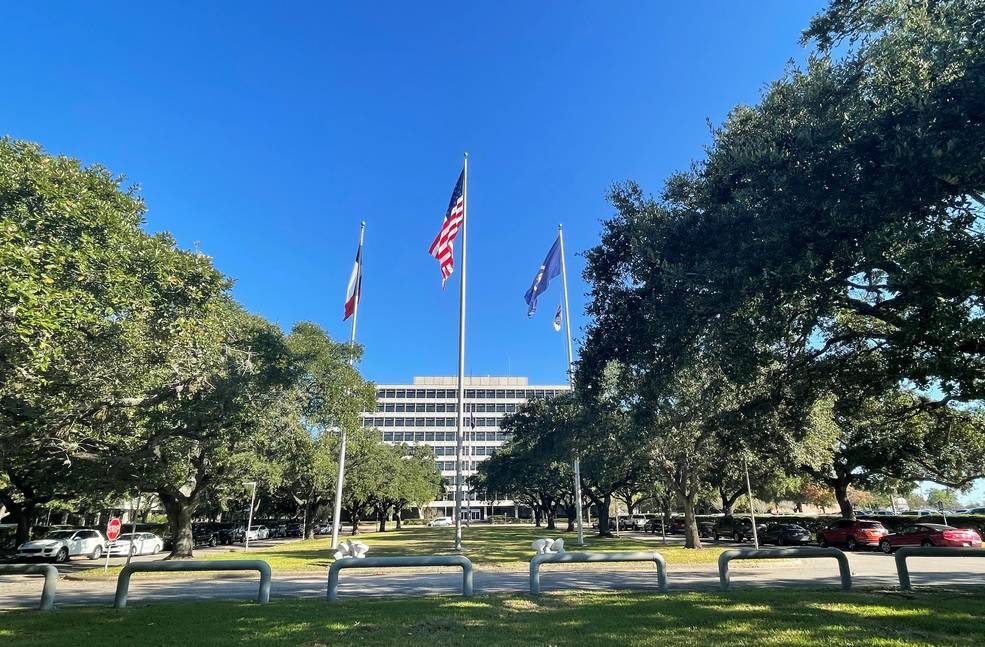
The Project Management Building, known today as Building 1, with its four flagpoles, at NASA’s JohnsonSpace Center in Houston in November 2021.
Carolyn L. Huntoon (January 1994 to August 1995)
After earning her Ph.D. at Baylor College of Medicine in Houston in 1968, Carolyn L. Huntoon completed a two-year fellowship at NASA’s Manned Spacecraft Center (MSC), as JSC was known then, to study changes in metabolism in astronauts returning from spaceflights. She joined MSC in 1970 as a senior researcher and served as the head of the endocrinology and biochemistry laboratories from 1974 to 1976. Huntoon served on the selection panel for several astronaut classes, including the first group that included women in 1978. From 1984 to 1987, she served as JSC’s associate director and then as director of space and life sciences from 1987 to 1994. For many years, Huntoon participated in the bilateral U.S.-Russian joint working group on biomedical sciences that formed the basis for early experiments in the Shuttle-Mir program.
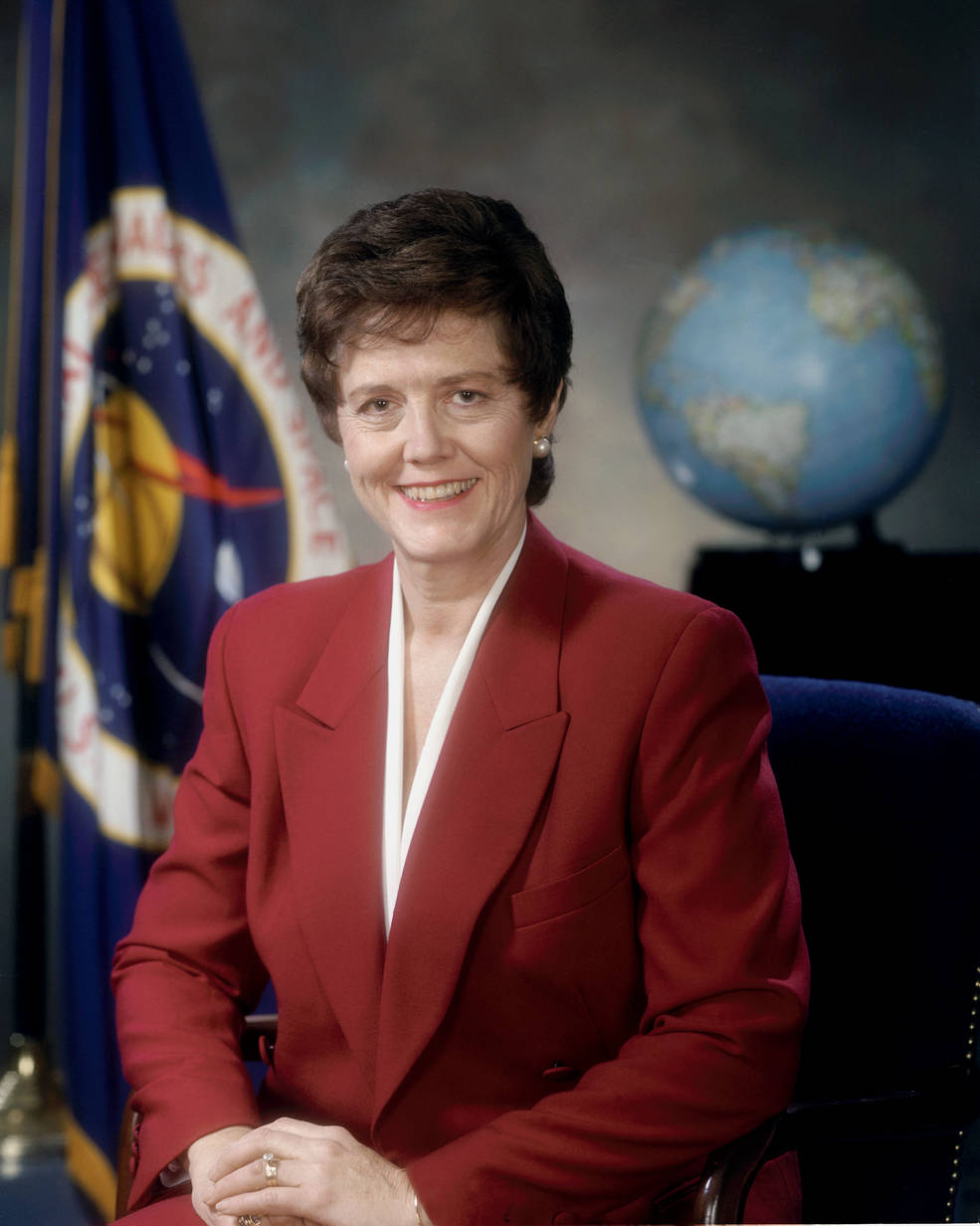
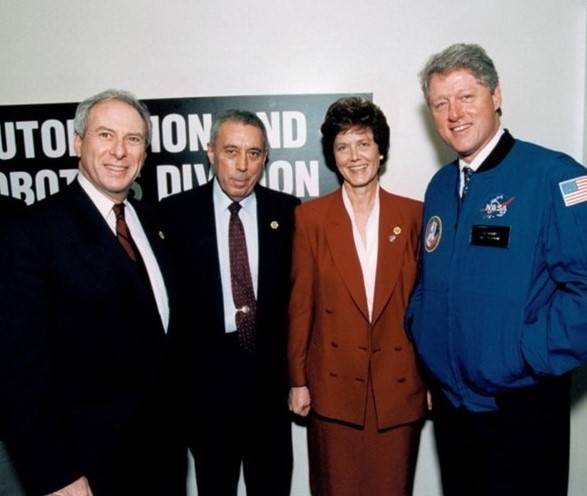
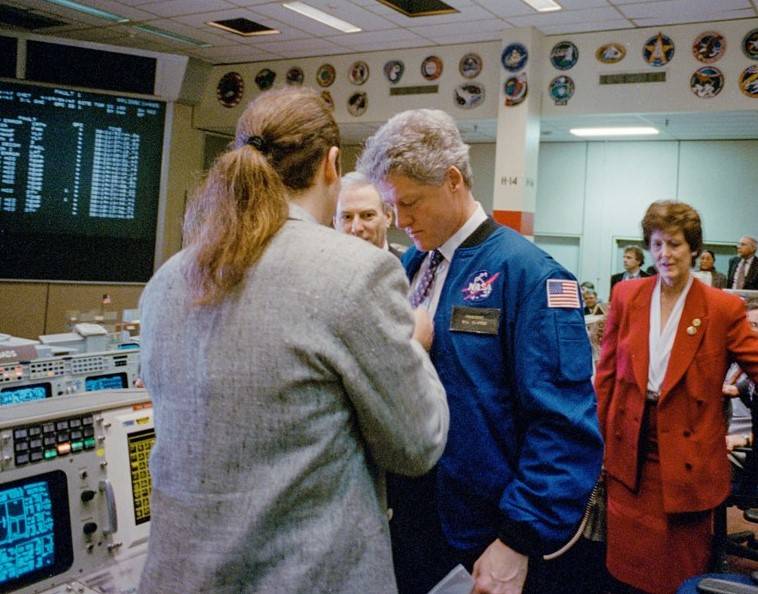
Left: Official portrait of Carolyn L. Huntoon, the sixth director of NASA’s Johnson Space Center (JSC) in Houston. Middle: Goldin, left, JSC Deputy Director George W.S. Abbey, Huntoon, and President Clinton during the latter’s visit to JSC. Right: In Mission Control, personnel attach a microphone on President Bill Clinton as he prepares to talk to the STS-60 crew, as Johnson Space Center Director Carolyn L. Huntoon looks on.
On Jan. 6, 1994, NASA Administrator Daniel S. Goldin named Huntoon as JSC’s sixth director, part of a sweeping management realignment that included appointment of new directors at five of NASA’s field centers. She became the first woman to lead any NASA field center. A few days after taking office, Huntoon named George W.S. Abbey, then working as a special assistant to Goldin, as her deputy.
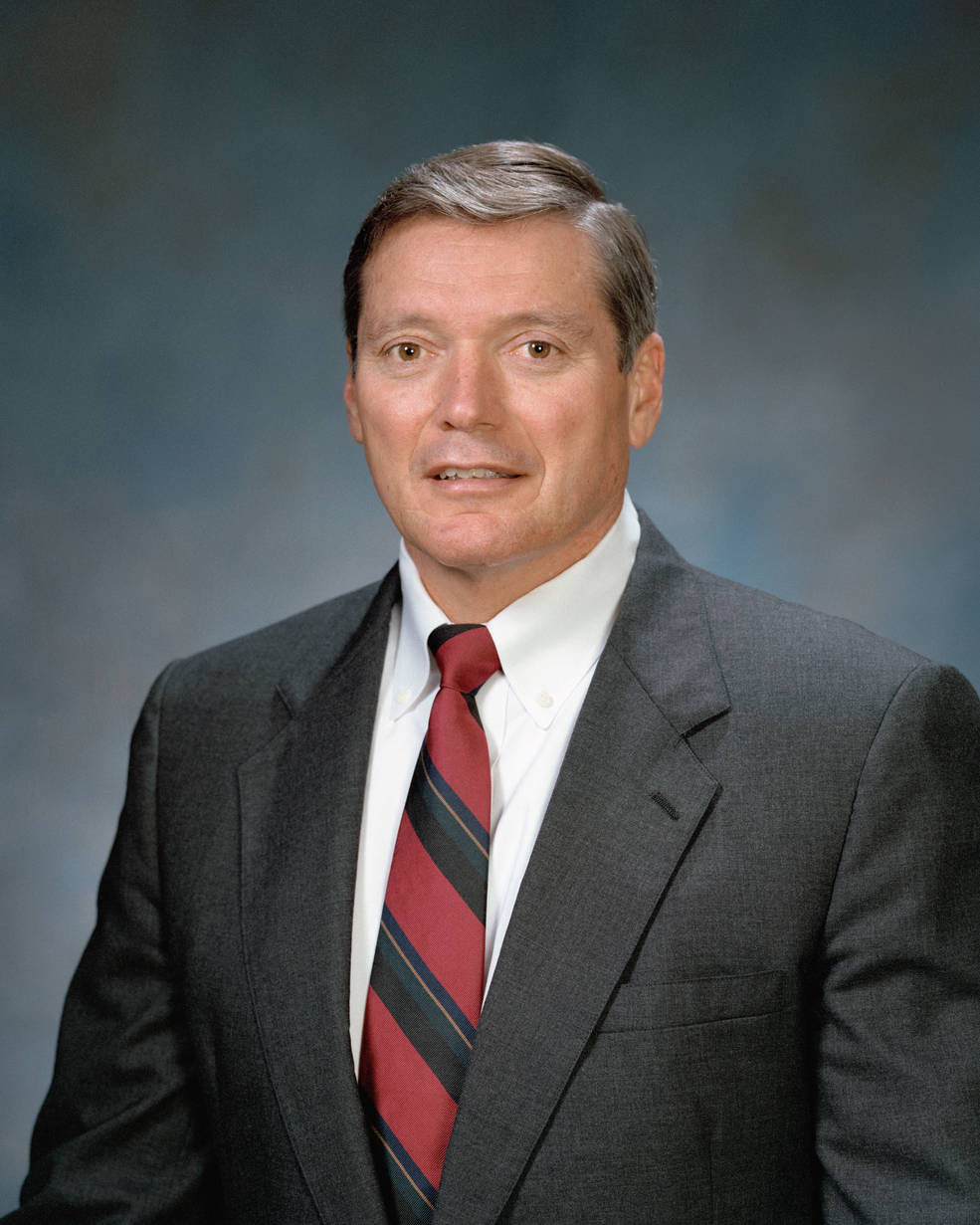
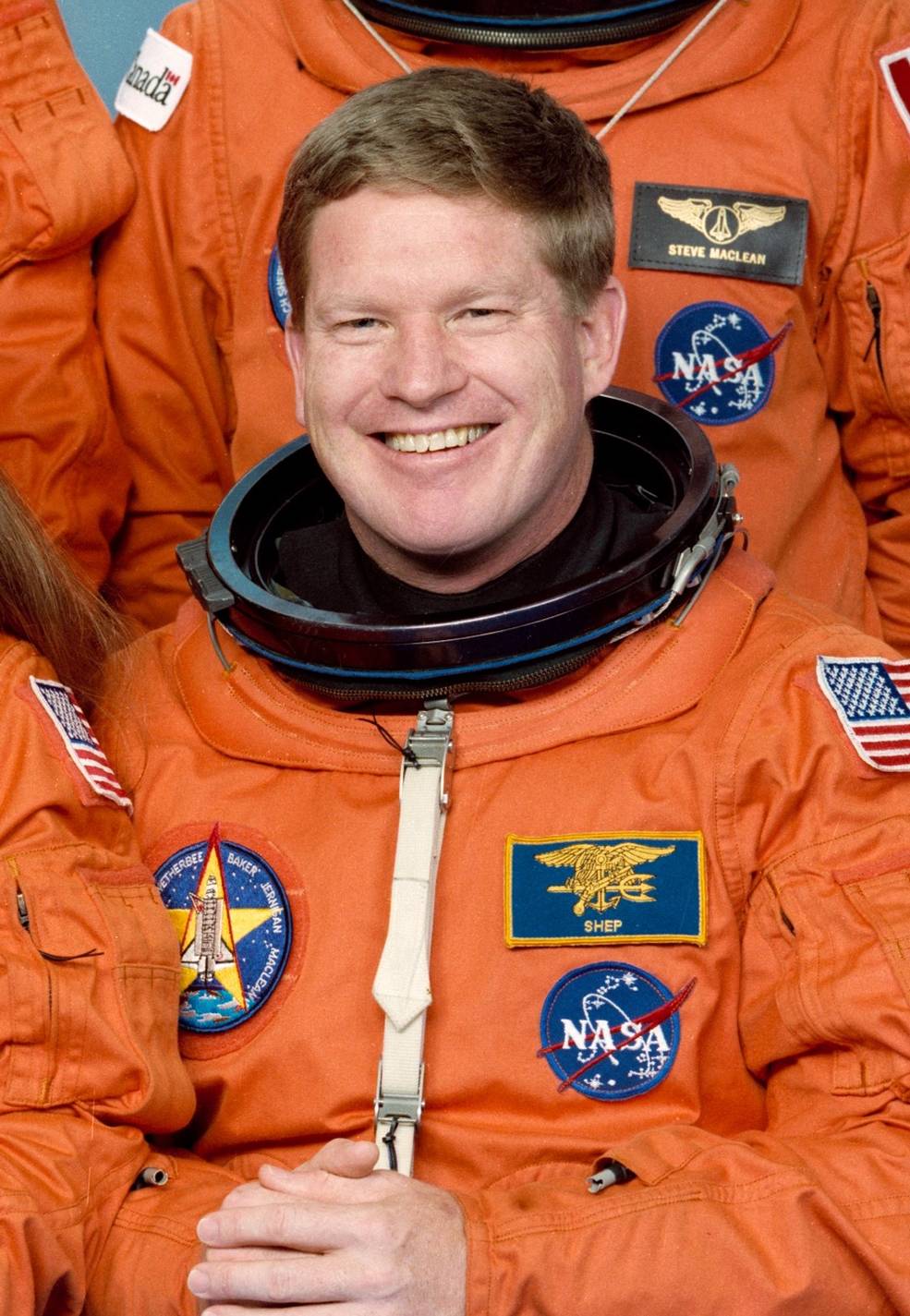
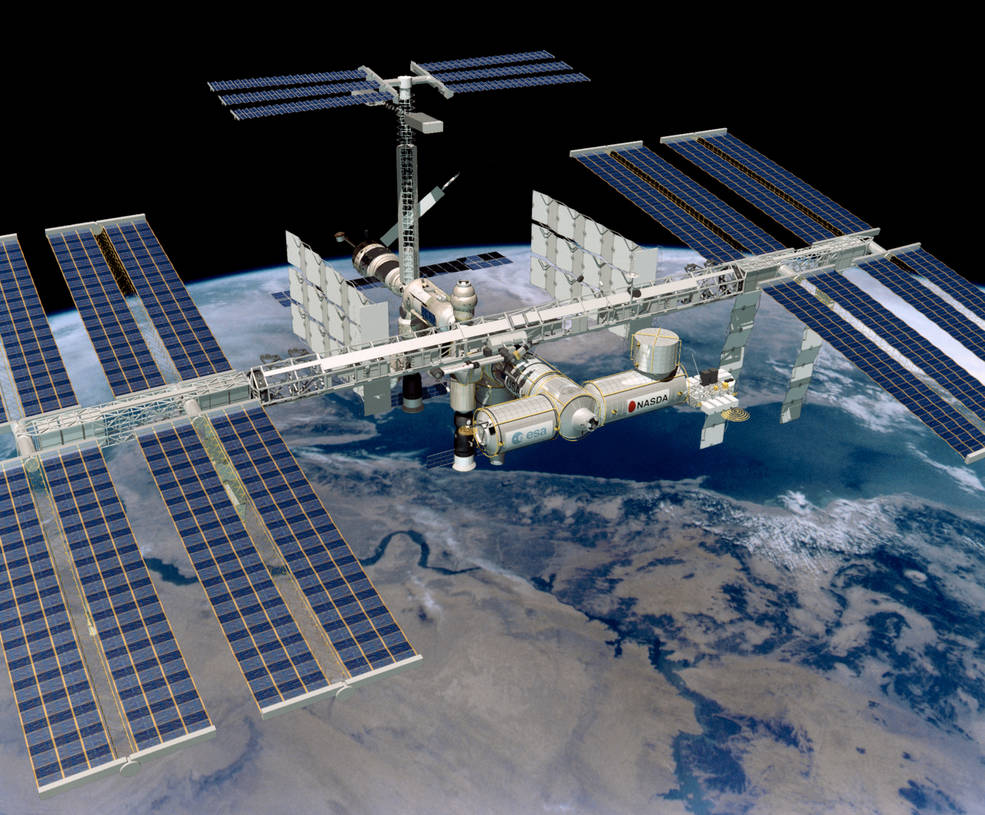
Left: Randy H. Brinkley was named International Space Station program manager in January 1994.Middle: Astronaut William M. Shepherd was named as Brinkley’s deputy for technical matters. Right: April 1994 illustration of the International Space Station, including elements provided by the Russian Federation.
Goldin named Hubble Space Telescope Mission Director Randy H. Brinkley as program manager for the International Space Station and astronaut William M. Shepherd as Brinkley’s deputy for technical matters. This marked the end of the transition from the space station Freedom program. Many of the functions and personnel, including the U.S.-Russian projects office, transitioned to the new space station program, now located at JSC. The Freedom work package contracts were consolidated under a single space station contract, with the Boeing Defense and Space Systems Group as the prime contractor. Huntoon also opened a new office to focus on technology transfer and commercialization efforts at JSC.
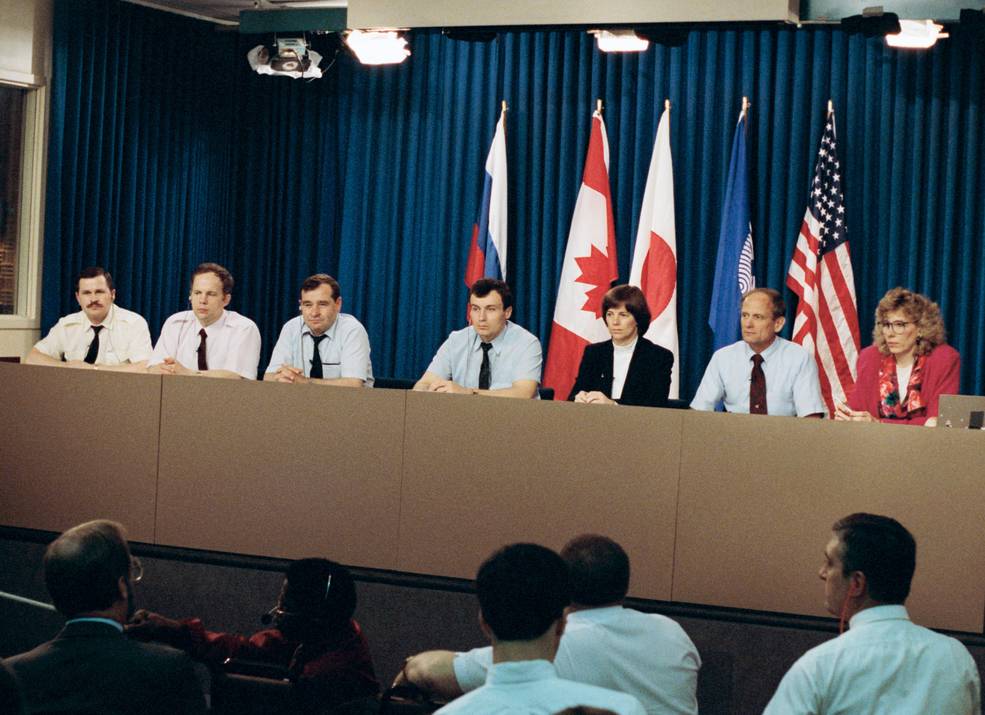

Left: June 1994 press conference to introduce the first Russian-American crew to fly aboard the Russian space station Mir as part of the Shuttle-Mir program, also known as Phase 1 of the space station program. Right: The astronaut class of 1995.
Eleven space shuttle missions flew during Huntoon’s tenure as center director. The first of these, STS-60, included the first Russian cosmonaut to fly aboard the shuttle as part of the Shuttle-Mir program. The flight coincided with the visit of President Bill Clinton to JSC, during which he toured Mission Control and talked with the crew aboard Discovery. Other Shuttle-Mir missions included STS-63, the first shuttle rendezvous with the Russian space station Mir that also included the first female shuttle pilot, and STS-71, the first Shuttle-Mir docking and crew exchange that returned astronaut Norman E. Thagard after his three-month flight aboard Mir, the first U.S. long-duration mission since Skylab in 1974. To meet the demands of future space shuttle and space station flights, NASA selected a new class of astronauts in 1995. This 15th group of astronauts consisted of 23 candidates, including two from France and one each from Japan and Canada.
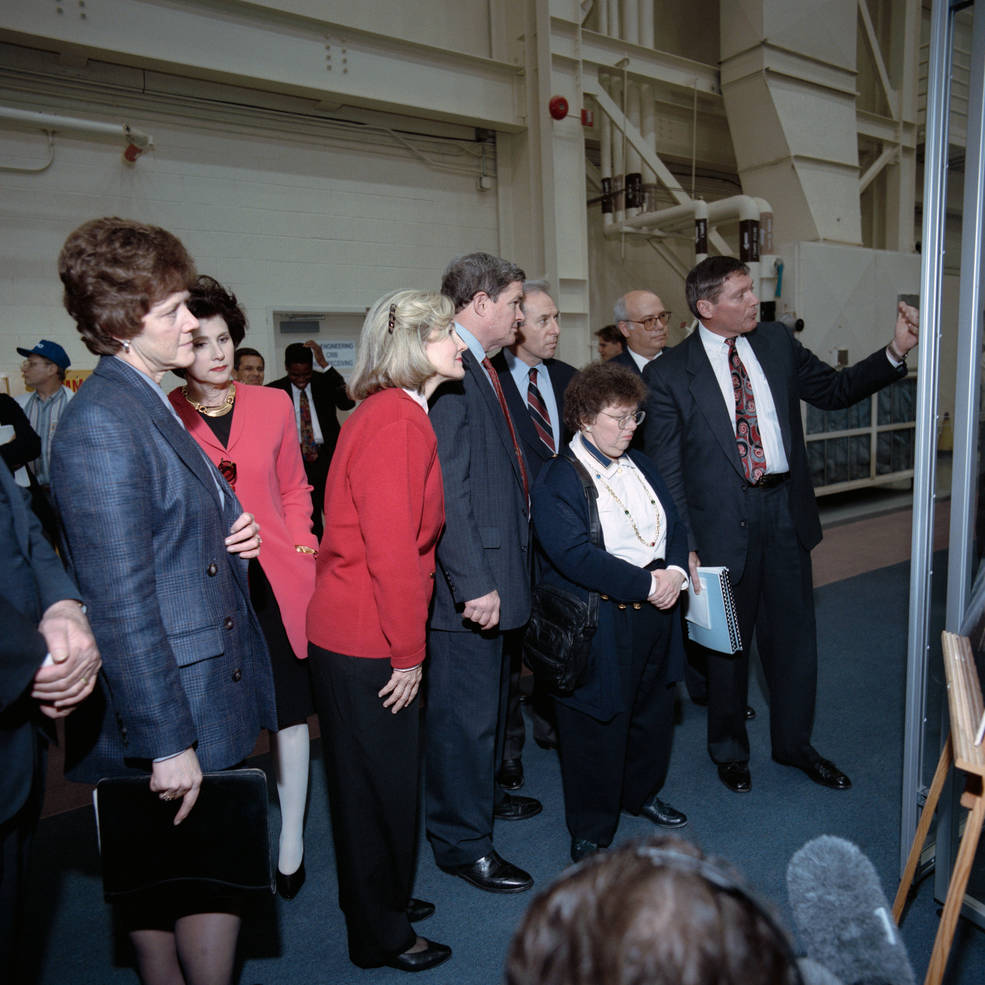
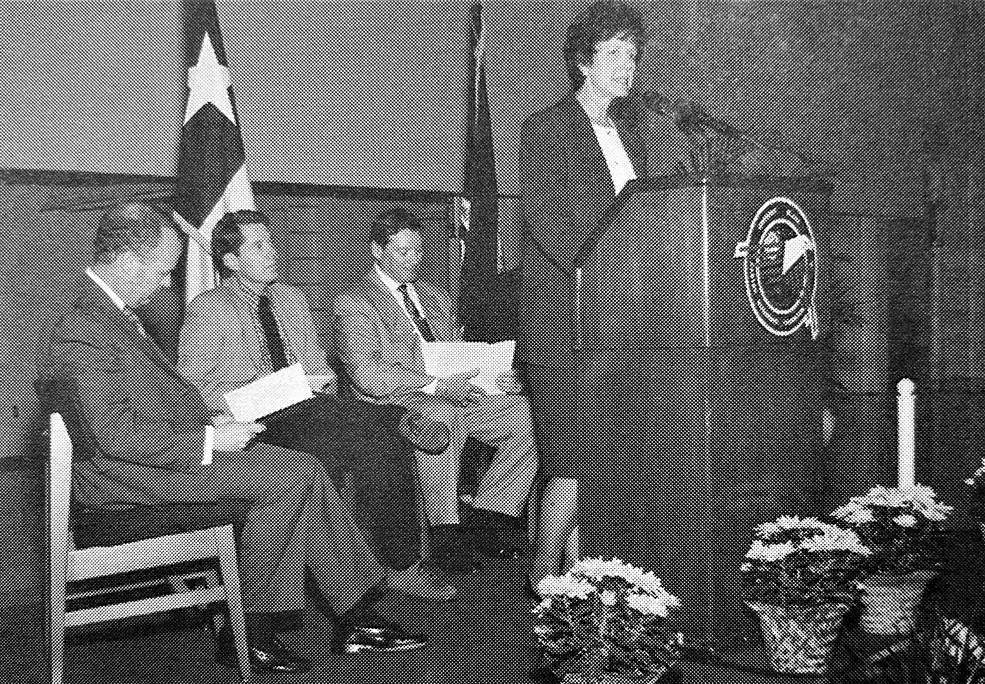

Left: In February 1995, Director of NASA’s Johnson Space Center in Houston Carolyn L. Huntoon, left, listens with Senators Kay Bailey Hutchison, Christopher S. Bond, and Barbara A. Mikulski as International Space Station Program Manager Randy H. Brinkley describes the space station mockup. Middle: In March 1995, Huntoon addresses the audience assembled for the dedication of the Sonny Carter Training Facility. Right: In April 1995, Huntoon, center, listens with Presidential Science Advisor John H. Gibbons as noted heart surgeon Dr. Michael E. DeBakey of Baylor College of Medicine explains the left ventricular assist device jointly developed with NASA.
In addition to refocusing management of the space shuttle and the space station at JSC, Huntoon also presided over the dedication of two new facilities to support the programs. On March 31, 1995, she dedicated the Sonny Carter Training Facility (SCTF), named after the late astronaut Manley L. “Sonny” Carter. The SCTF housed the Neutral Buoyancy Laboratory (NBL), the world’s largest indoor pool – 202 feet long, 102 feet wide, and 40 feet deep – built to enable astronauts to train for spacewalks to assemble the space station. The NBL became operational in 1997, replacing the older and smaller Weightless Environment Training Facility for spacewalk training. In July 1995, Huntoon dedicated a new state-of-the-art control room, known as the White Flight Control Room (FCR), in the space station wing of the Mission Control Center. Operators began full control of shuttle missions from the White FCR during the STS-77 mission in 1996.
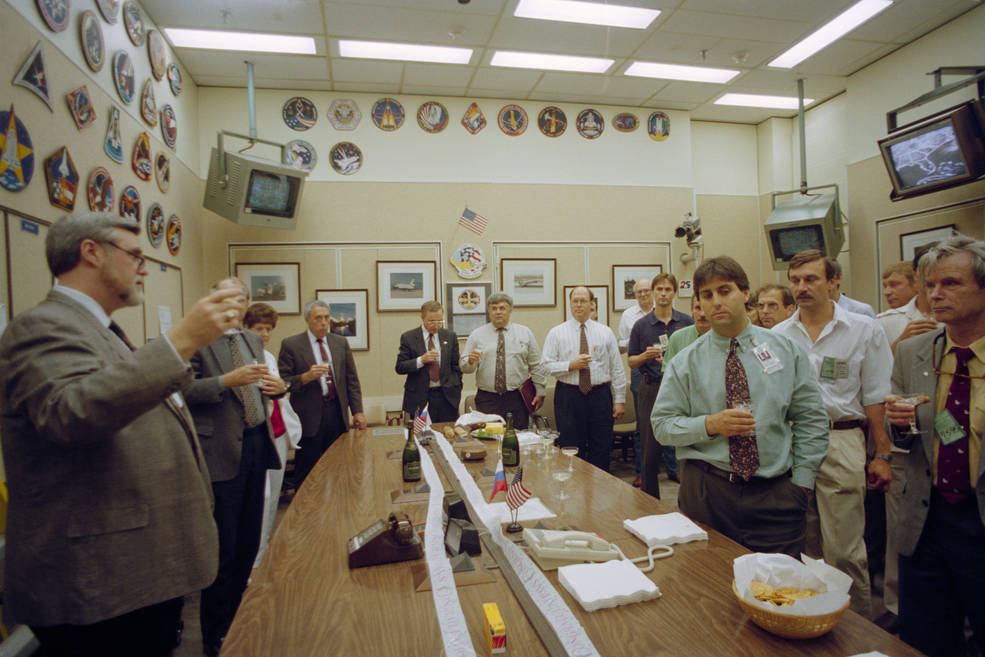

Left: Johnson Space Center Director Carolyn L. Huntoon, third from left, in the Mission Control Center celebrating the successful first Shuttle-Mir docking mission in July 1995. Right: Huntoon, in green suit, preparing to cut the ribbon to dedicate the new flight control room in July 1995.
While JSC director, Huntoon received two prestigious awards. She earned the first in May 1994, when she was presented with the Distinguished Executive Award – a Presidential Rank Award to recognize her leadership, personal dedication, and initiative during her NASA career. In addition to her outstanding capabilities as a leader and manager, and as a scientist and innovator, the award also recognized her work in establishing cooperative research agreements between JSC and hospital and health organizations. One example was the cardiac left ventricular assist device, a joint development between JSC and Baylor College of Medicine’s noted heart surgeon Dr. Michael E. DeBakey. In June 1995, the JSC chapter of the National Management Association presented Huntoon with the Silver Knight Award, the highest award a local chapter can bestow. The award recognized Huntoon’s leadership as JSC director and her ability to inspire the JSC community.
In August 1995, NASA Administrator Goldin asked Huntoon to lead the effort to establish an institute for life sciences research, naming Abbey as acting JSC director. From 1996 to 1998, Huntoon served as the NASA representative in the Office of Science and Technology and Policy in Washington, D.C. She retired from NASA in 1998 to join George Washington University and a year later was confirmed as assistant secretary for the Department of Energy’s Office of Environmental Management. Huntoon retired from government service in 2001.
George W.S. Abbey (January 1996 to February 2001)
After being detailed from the U.S. Air Force to NASA’s newly-opened MSC in 1964, Abbey joined the center’s staff in 1967 as a technical assistant to George M. Low, manager of the Apollo Spacecraft Program Office, playing a key role in the recovery from the Apollo 1 fire. Two years later, he was assigned as technical assistant to MSC Director Robert R. Gilruth. From 1976 to 1985, Abbey served as director of flight operations, and following a reorganization, director of the newly-created flight crew operations organization. In 1988, NASA Administrator James C. Fletcher appointed Abbey deputy associate administrator for space flight. From 1990 to 1991, he served as deputy for operations and NASA representative to the Synthesis Group, charged with defining strategies for future exploration missions. In 1991, Abbey was named to the National Space Council until his appointment in 1992 as special assistant to NASA Administrator Goldin. In January 1994, JSC Director Huntoon designated Abbey as her deputy.
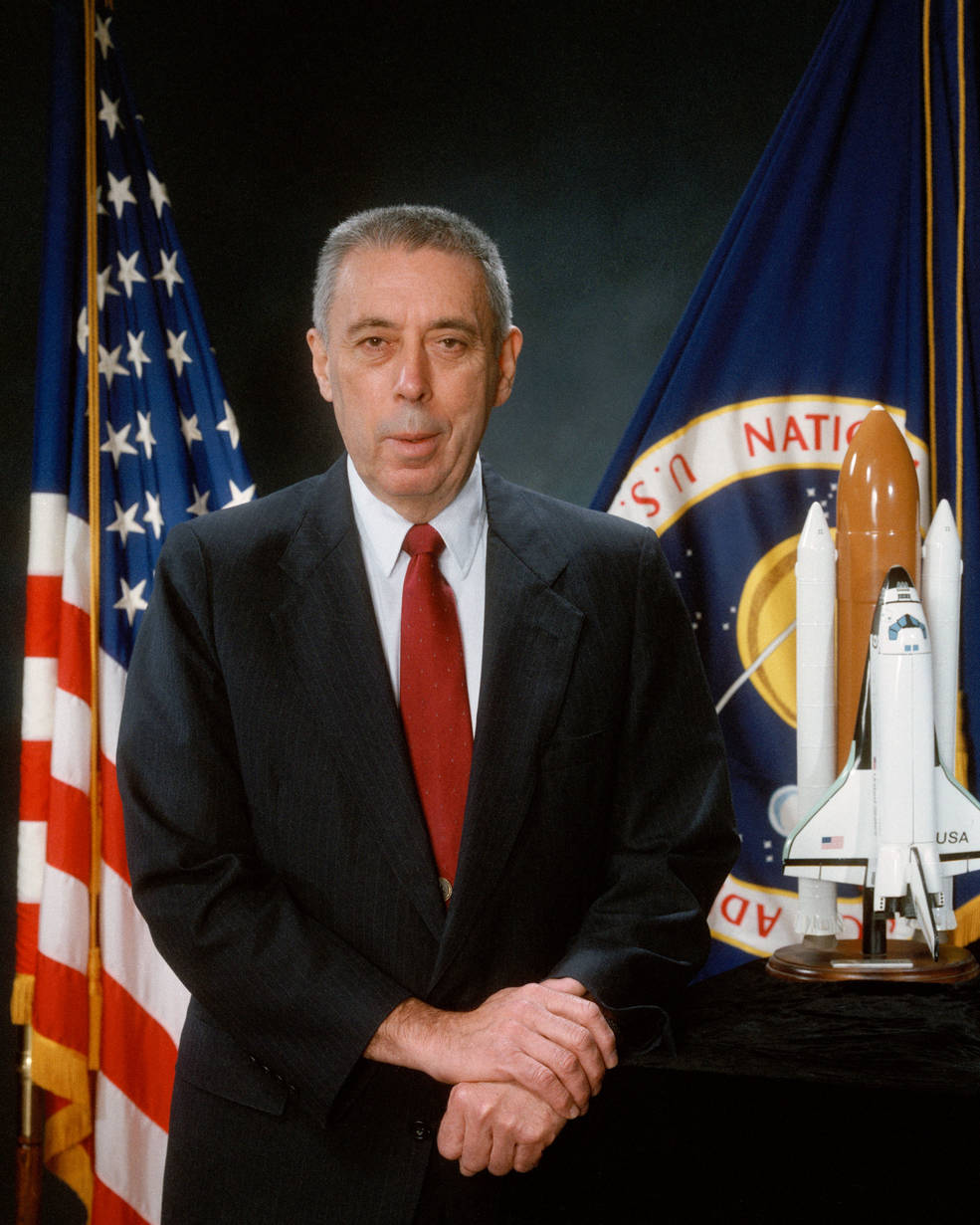
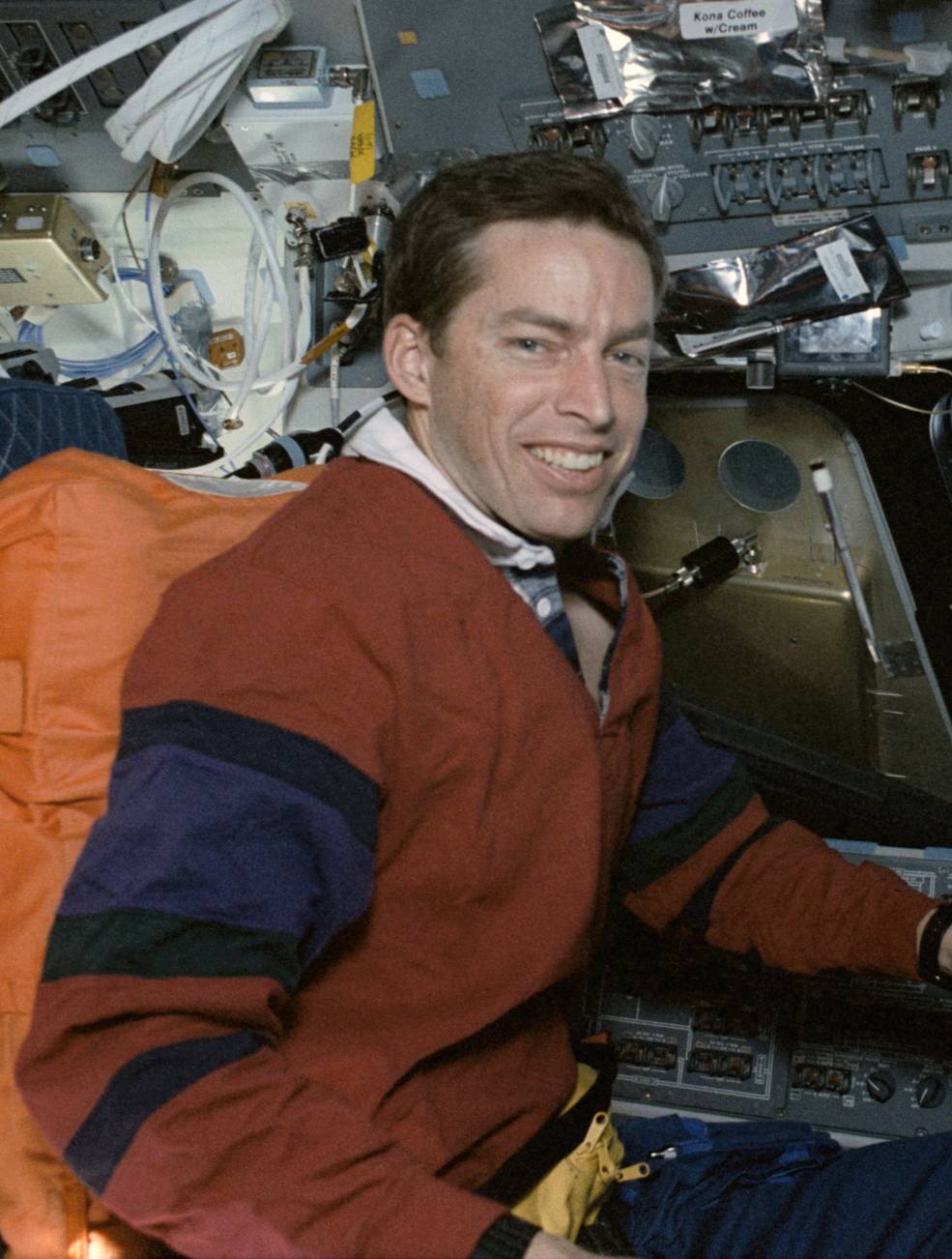
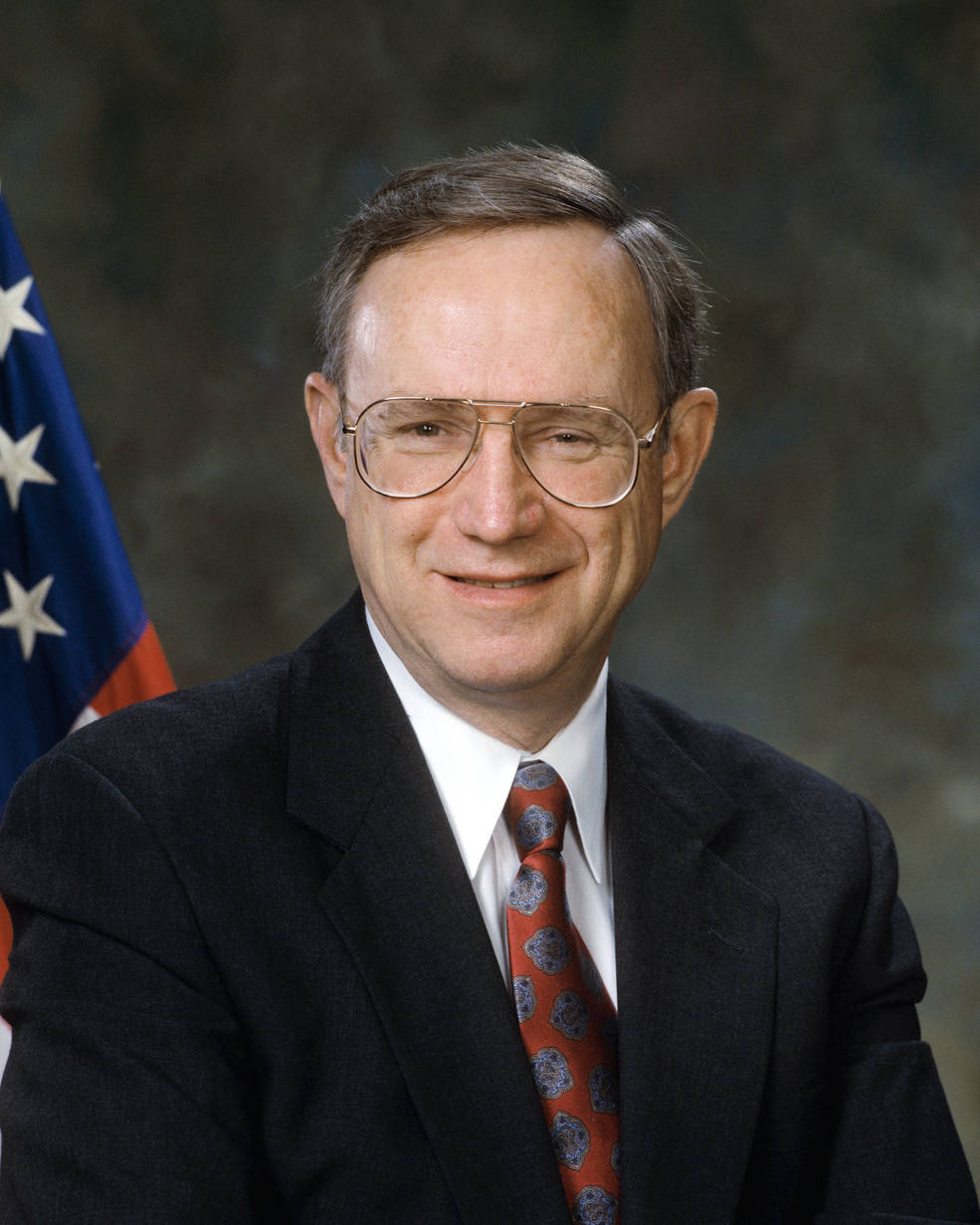
Left: Official portrait of George W.S. Abbey, seventh director of NASA’s Johnson Space Center (JSC) in Houston. Middle: JSC deputy director James D. Wetherbee. Right: Space shuttle program manager Thomas W. “Tommy” Holloway.
With JSC Director Huntoon’s departure to NASA Headquarters in August 1995, NASA Administrator Goldin named Deputy Director Abbey as acting center director. Among his first actions, Abbey named astronaut James D. Wetherbee, recently returned as the commander of the STS-63 Mir rendezvous mission, as acting deputy director. Other management changes included naming Thomas W. “Tommy” Holloway as space shuttle program manager, replacing Brewster H. Shaw who left the agency, and appointing astronaut Frank L. Culbertson as Holloway’s replacement as manager of the Phase 1 program. Two weeks after assuming his new role, Abbey hosted JSC’s first safety awareness day, celebrated to this day as an annual event at the center. He led the center through two partial government shutdowns, a five-day furlough in November 1995 – during which essential employees supported the STS-74 docking mission to Mir – and a 21-day furlough from Dec. 16, 1995, to Jan. 6, 1996.
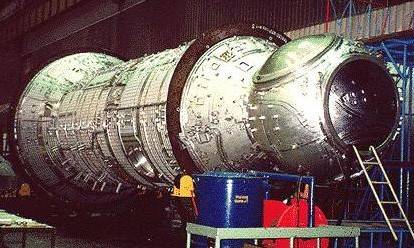
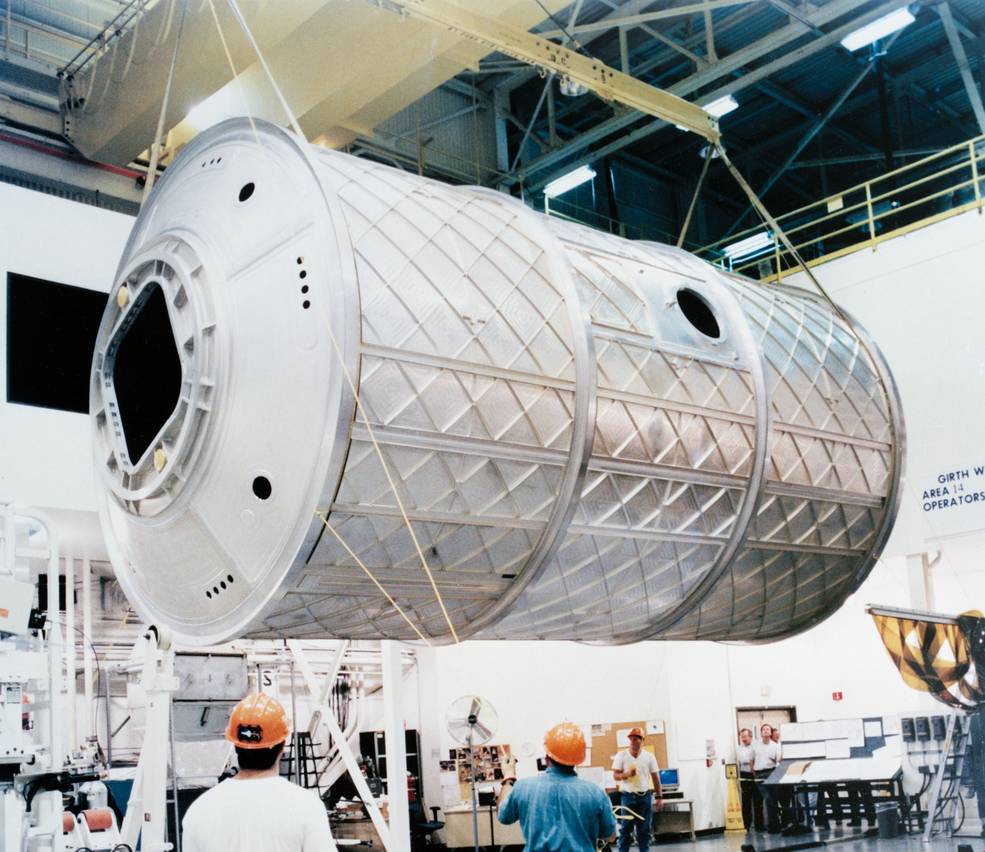
Left: The Functional Cargo Block (known by the Russian acronym FGB) module at the Khrunichev State Research and Production Space Center in Moscow during early construction. Right: The U.S. Laboratory module at Boeing’s facility at NASA’s Marshall Space Flight Center in Huntsville, Alabama.
The International Space Station grew from advanced concepts and a few hardware elements on the ground to an orbiting outpost during Abbey’s tenure as center director. On Aug. 15, 1995, space station prime contractor Boeing Defense and Space Group and Russia’s Khrunichev State Research and Production Space Center signed a contract for the completion, launch, and on-orbit checkout of the Functional Cargo Block (known by the Russian acronym FGB), the first on-orbit element of the space station. Early elements of the American segment, such as the Node 1 and U.S. Laboratory modules, truss segments, and solar arrays, were taking shape at contractor facilities.
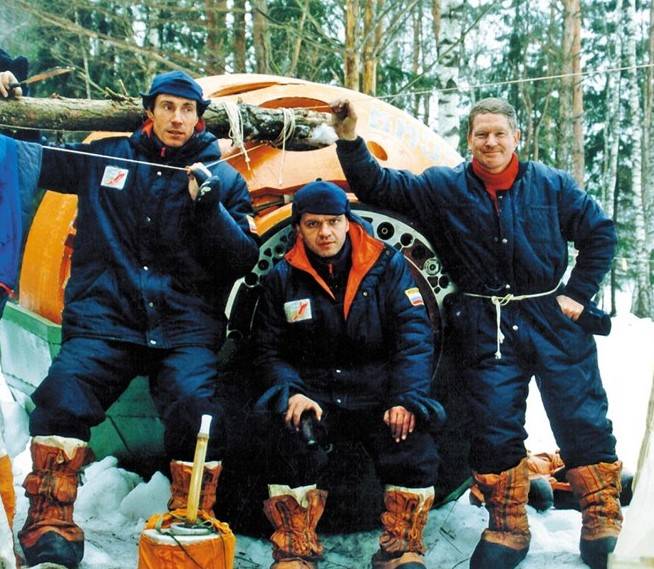
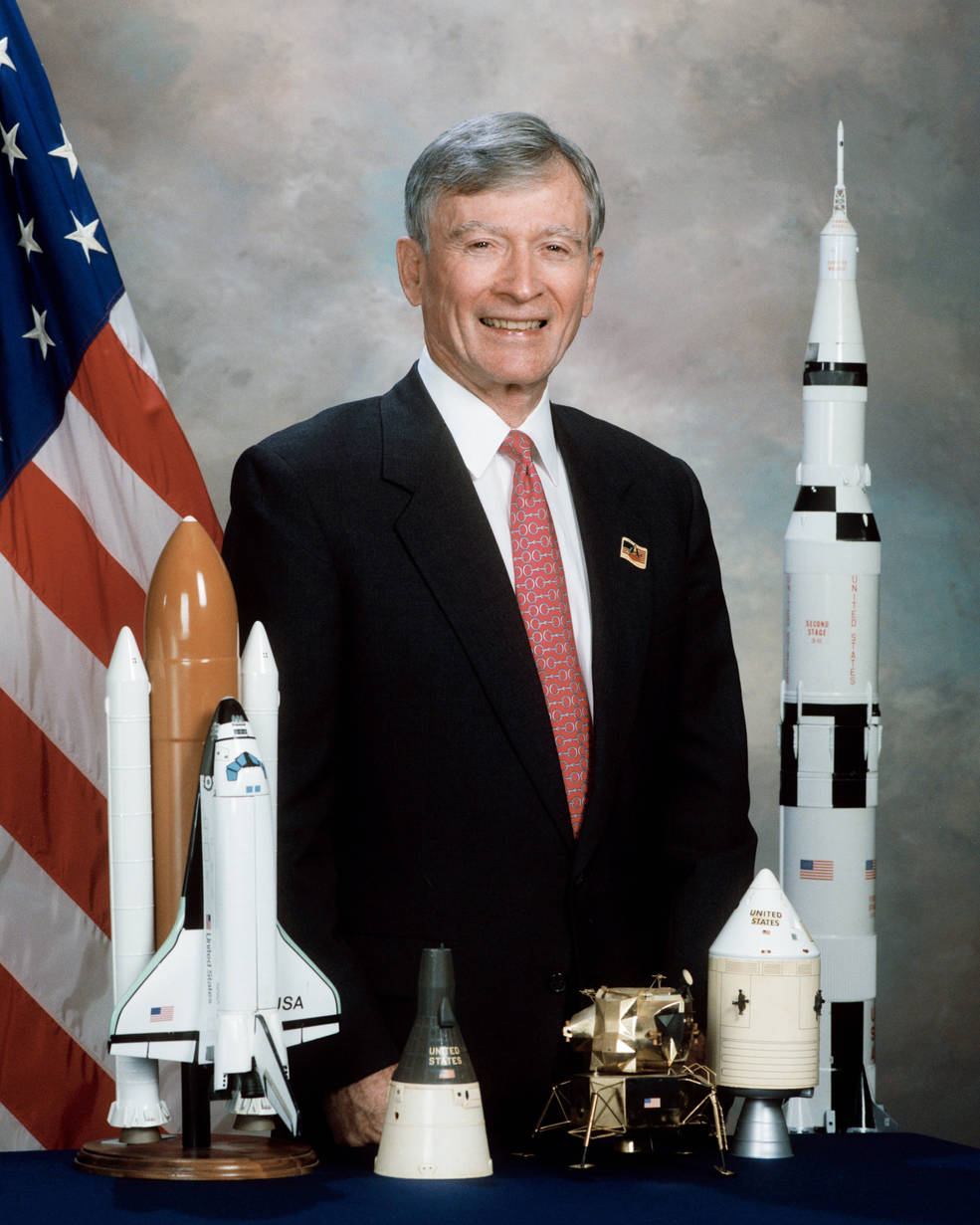
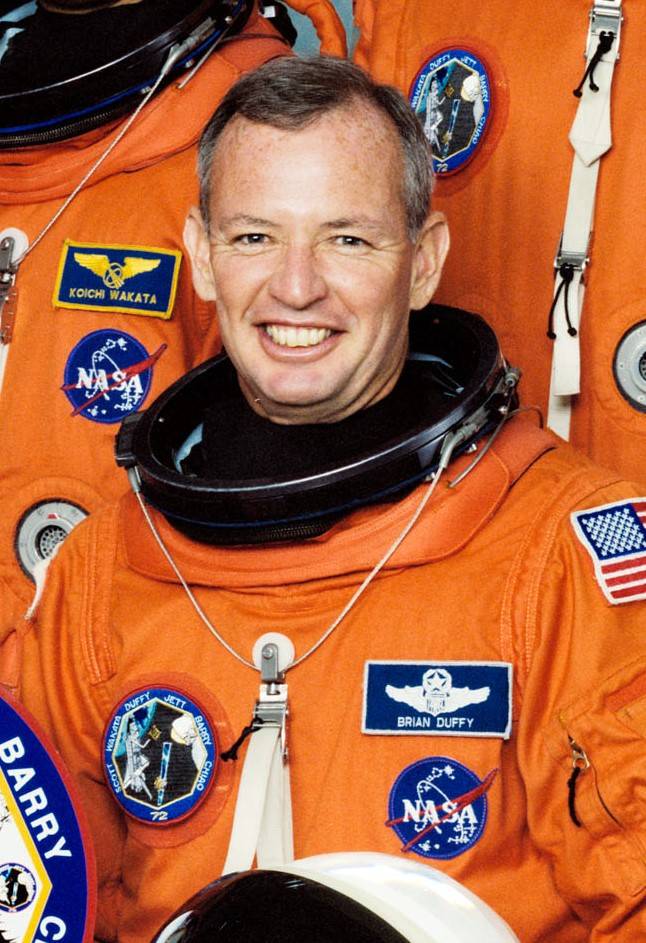
Left: The first long-duration crew assigned to the space station, Sergei K. Krikalev, left, and Yuri P. Gidzenko of Roscosmos and NASA astronaut William M. Shepherd, during winter survival training in Russia. Middle: Johnson Space Center (JSC) associate director for technical issues John W. Young. Right: JSC assistant director Brian Duffy.
On Jan. 23, 1996, NASA Administrator Goldin formally named Abbey as JSC’s seventh director. That same month, the U.S. and Russia announced NASA astronaut Shepherd and Sergey K. Krikalev of Roscosmos as two of the members of the space station’s first expedition crew, then planned for launch in 1998. Roscosmos later named Yuri P. Gidzenko as the third crew member. In February, Abbey named two veteran astronauts to top management positions – John W. Young as associate director for technical issues and Brian Duffy as assistant director. In December 1996, Duffy temporarily took over as acting deputy center director while Wetherbee returned to the astronaut office to train for and fly the STS-86 mission to Mir. Administrator Goldin formally designated JSC as the lead center for both space shuttle and space station programs. Ground processing and inflight operations of the space shuttle were consolidated under a single contract awarded to United Space Alliance beginning in October 1996.
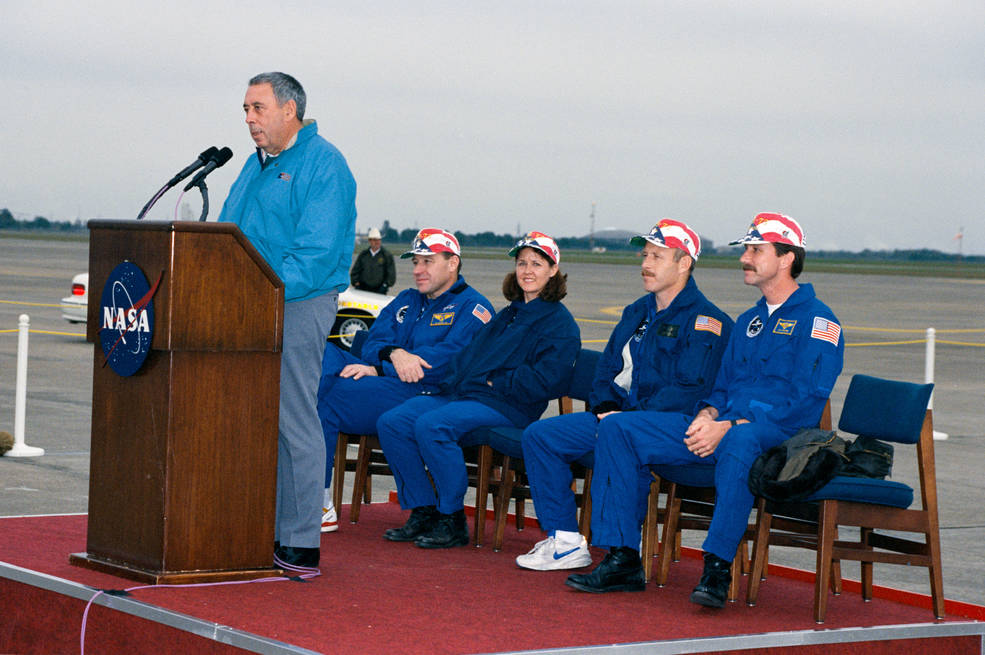
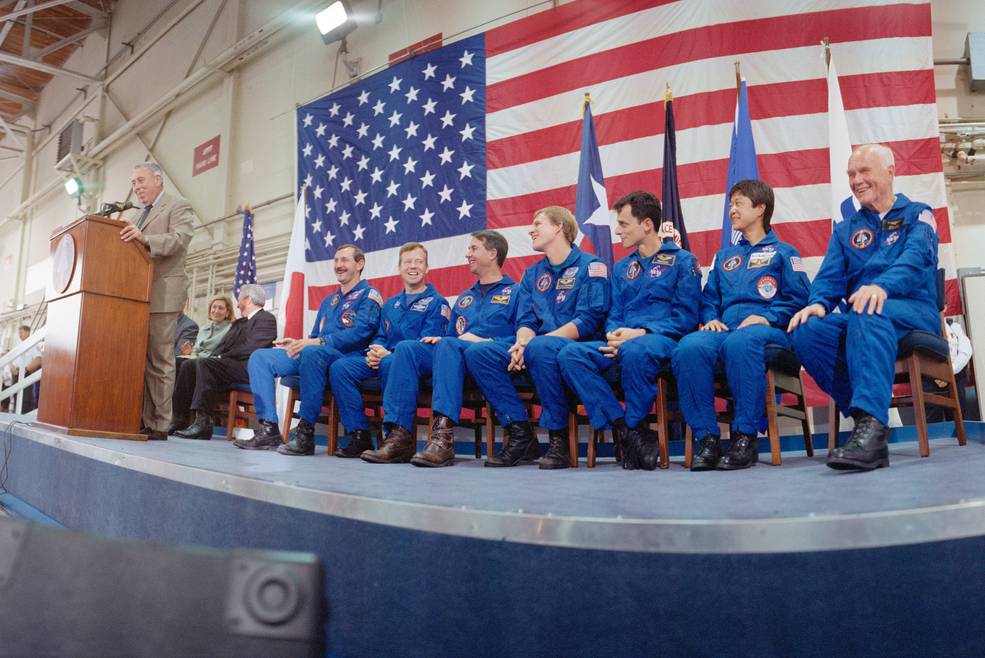
Left: At Ellington Field, director of NASA’s Johnson Space Center George W.S. Abbey addressed the crowd to welcome home the STS-73 crew in November 1995. Right: Abbey addresses the audience during the welcome home ceremony for the STS-95 crew in November 1998.
During his term as JSC’s director, Abbey oversaw 32 space shuttle missions. Of significance, these included eight of the nine Shuttle-Mir docking missions and six long-duration flights of astronauts aboard Mir, two Hubble repair missions, several Spacelab and other science missions, John H. Glenn’s return to space, the launch of the Chandra X-ray telescope that included Eileen M. Collins– the first female shuttle commander and the first seven space station assembly missions. The longest-ever shuttle mission, STS-80, also occurred during Abbey’s tenure, clocking in at 17 days, 15 hours, and 53 minutes.
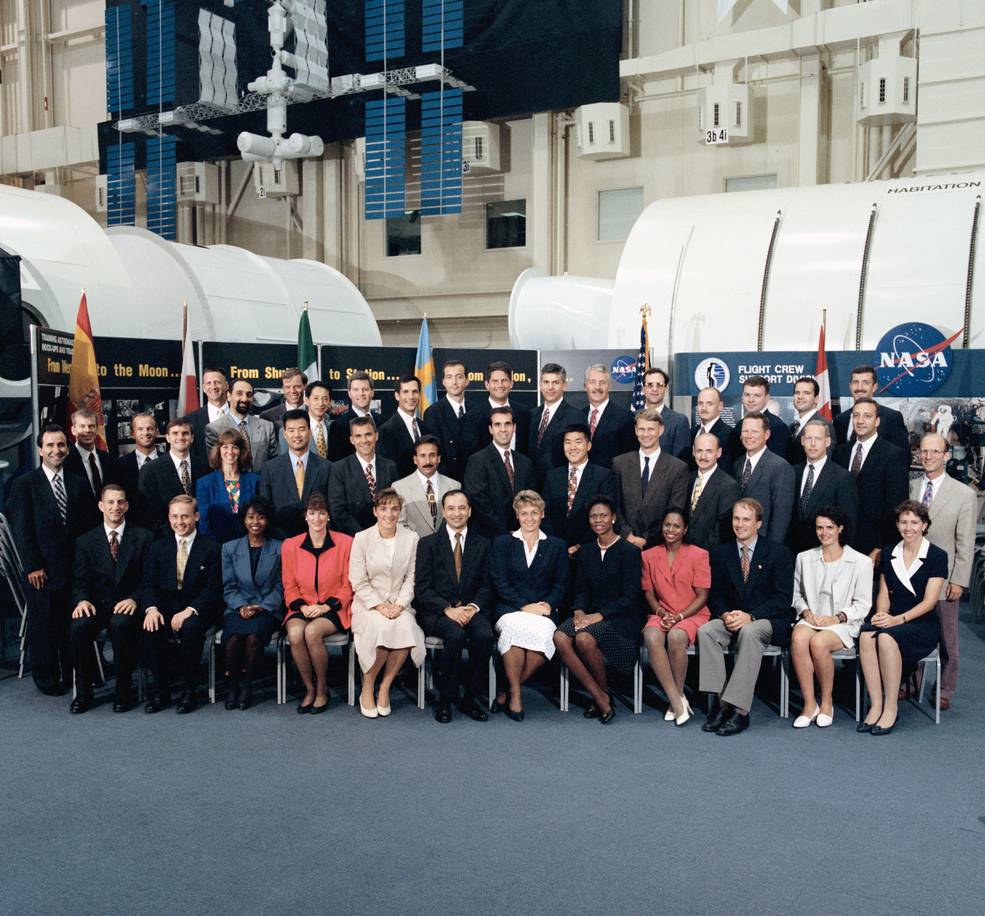
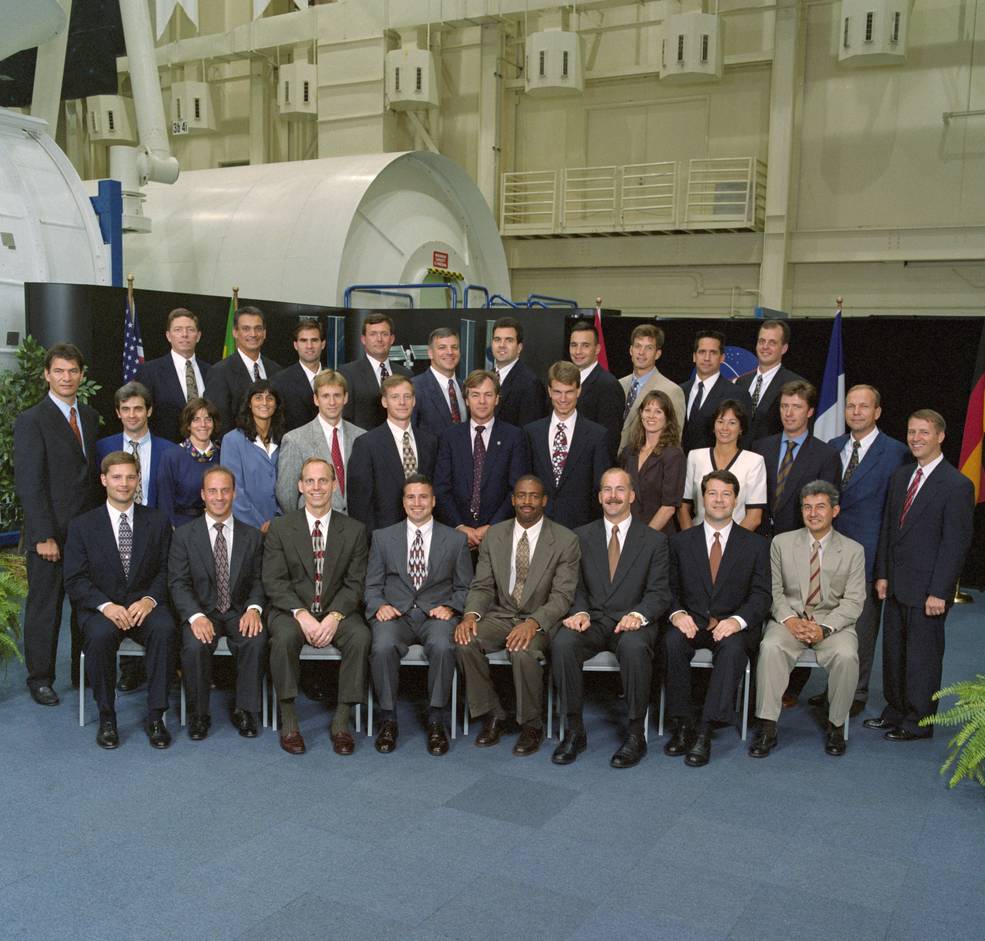
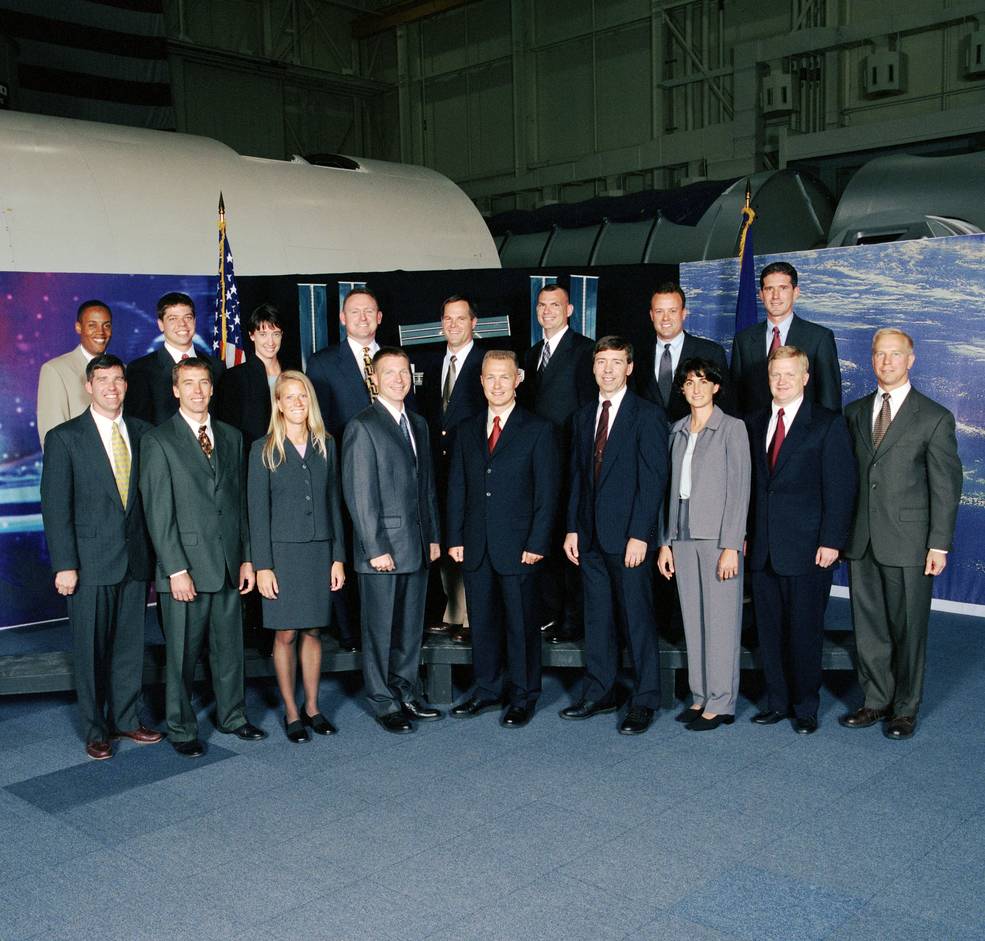
The classes of 1996, left, 1998, and 2000 added 77 new astronauts to NASA’s program and 14 to the programs of international partners.
To sustain the flight cadence of shuttle, Mir, and space station missions, Abbey supported bi-annual selections of large and diverse astronaut classes, including international participants. At 44, the Group 16 astronaut class of 1996 was the largest ever, and in addition to the 35 NASA astronauts included five from Europe and two each from Canada and Japan. This class also included the first set of identical twins accepted into the astronaut program, Mark E. Kelly and Scott J. Kelly. Group 17, selected in 1998, comprised 32 candidates, 25 from NASA and seven internationals: four from Europe, two from Canada, and one from Brazil. The class of 2000, Group 18, included 17 NASA astronauts.
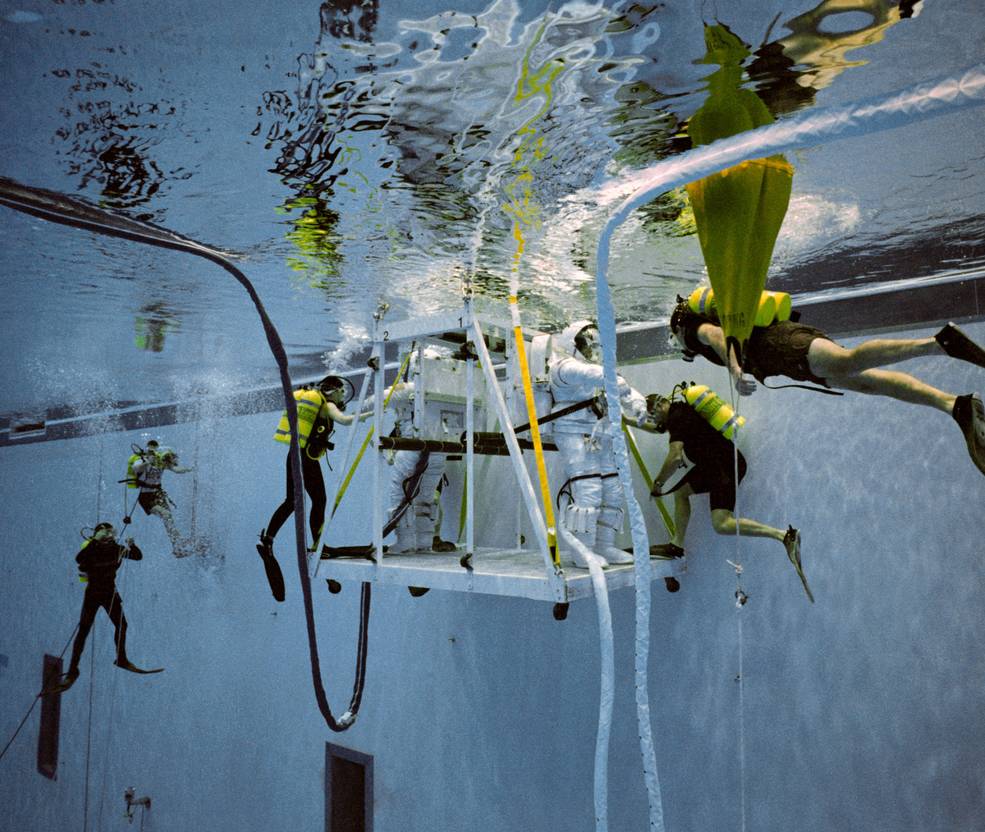
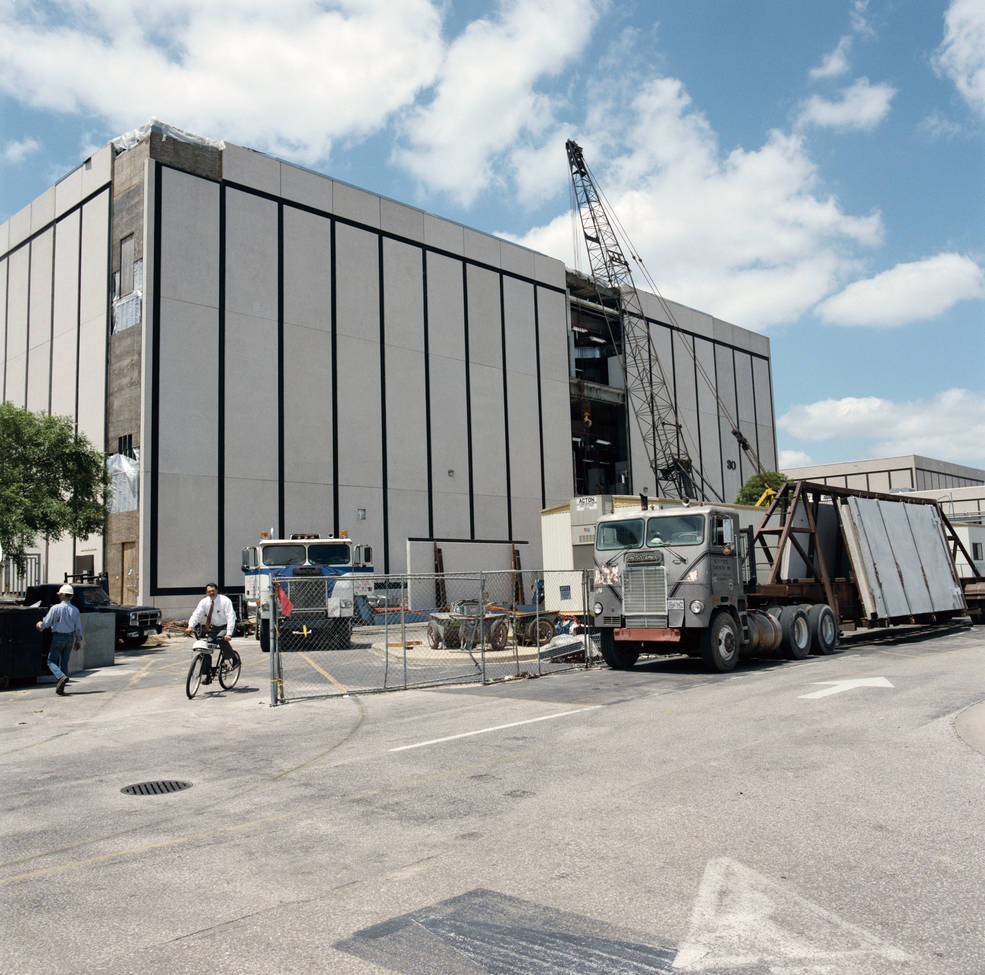
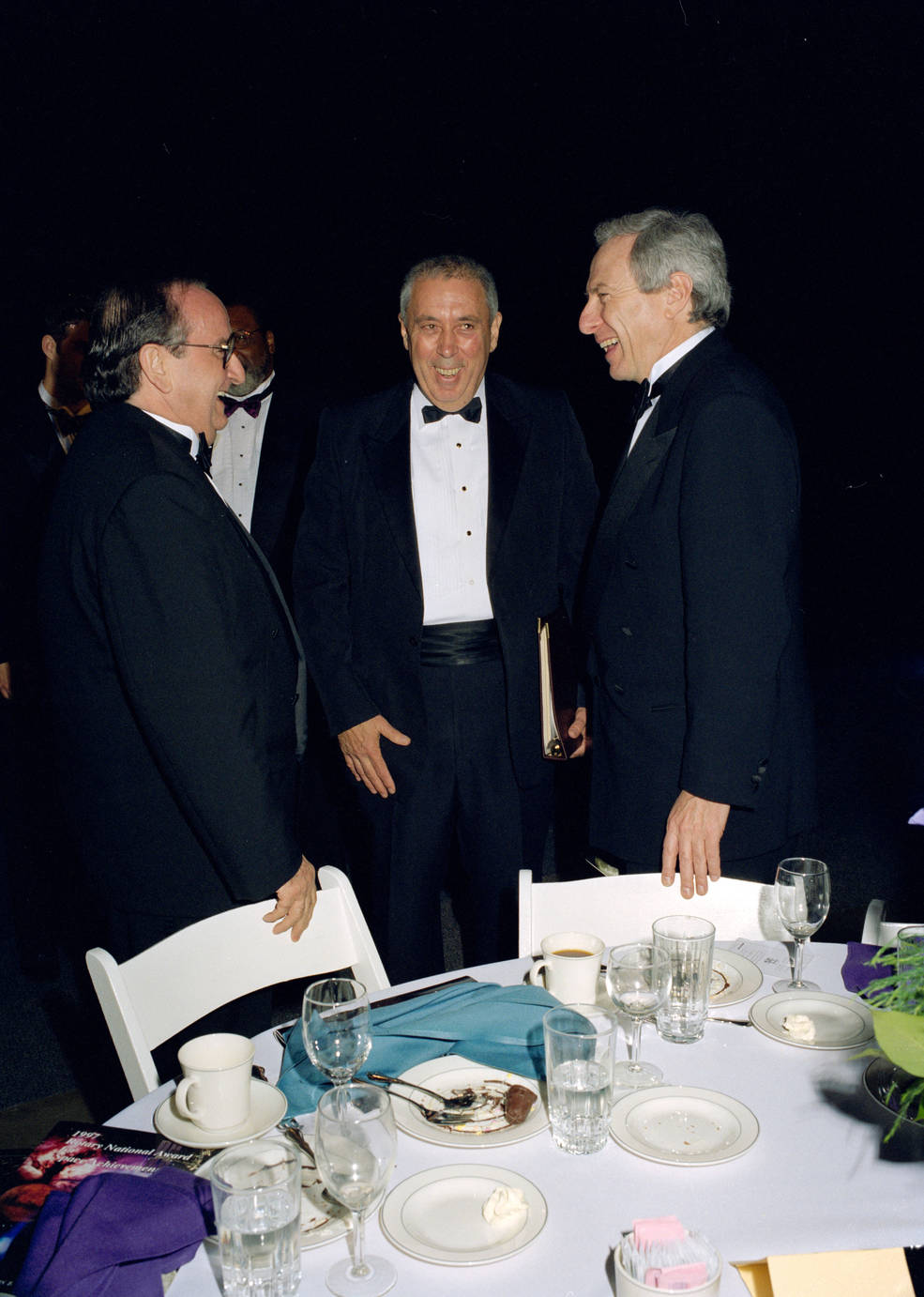
Left: Astronauts Jerry L. Ross and Linda M. Godwin conduct a certification dive in the Neutral Buoyancy Laboratory in November 1996. Middle: Workers put the finishing touches on the new space station operations wing of the Mission Control Center in May 1997. Right: Director of NASA’s Johnson Space Center in Houston George W.S. Abbey, center, with restaurateur Giovanni Camera, left, and NASA Administrator Daniel S. Goldin, at the ceremony where Abbey received the Rotary National Award National Space Trophy in February 1997.
Two new facilities at JSC became available for space shuttle and space station operations. Following certification, in 1997 the NBL became operational to support astronaut training for spacewalks. The world’s largest indoor pool could accommodate training mockups of structures such as the Hubble Space Telescope and the space station that were too large for the older WETF. In Building 30’s Mission Control Center, the new White FCR in the space station operations wing became fully operational during the STS-77 mission in 1996. The Blue FCR began supporting space station operations two years later. In March 1997, Abbey received the prestigious National Space Trophy from the Rotary National Award for Space Achievement Foundation. The award recognized his international reputation as one of the chief architects of the U.S. human spaceflight program and his exceptional vision, superior leadership qualities, effective problem-solving techniques, and broad understanding of technical management.
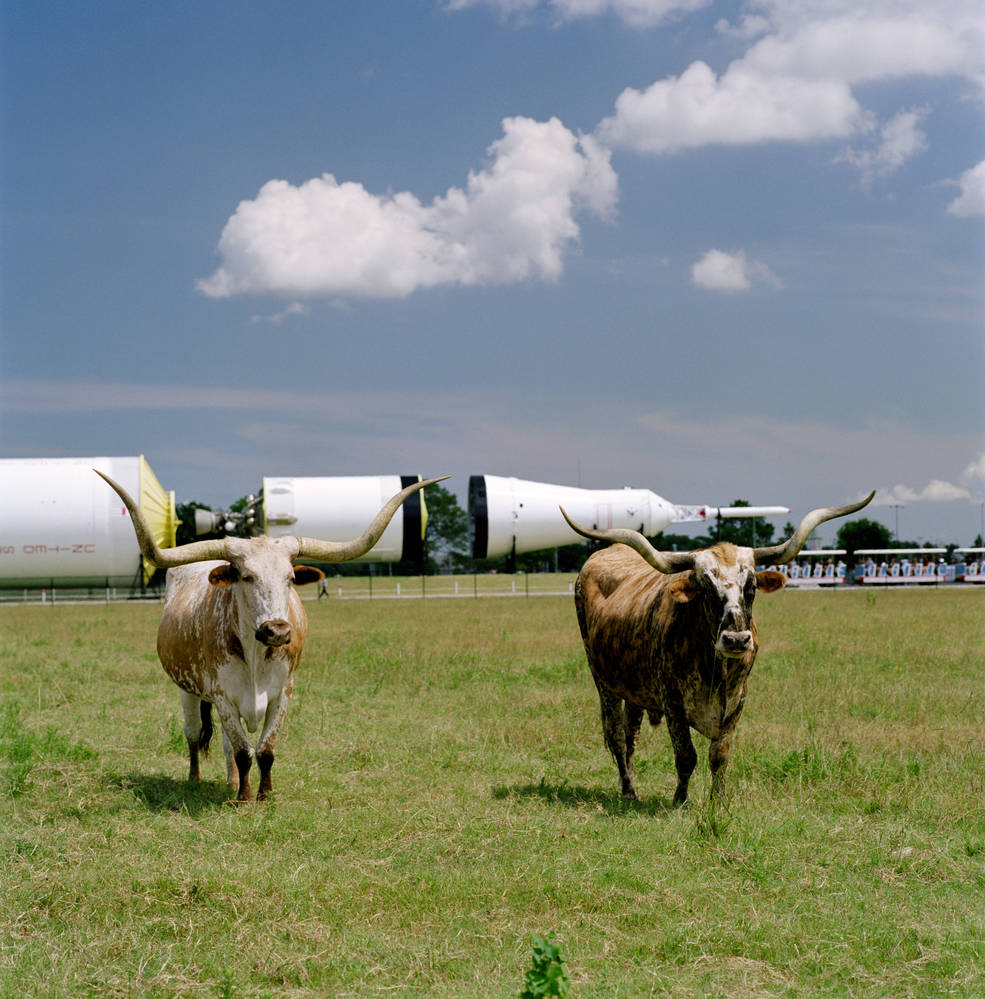
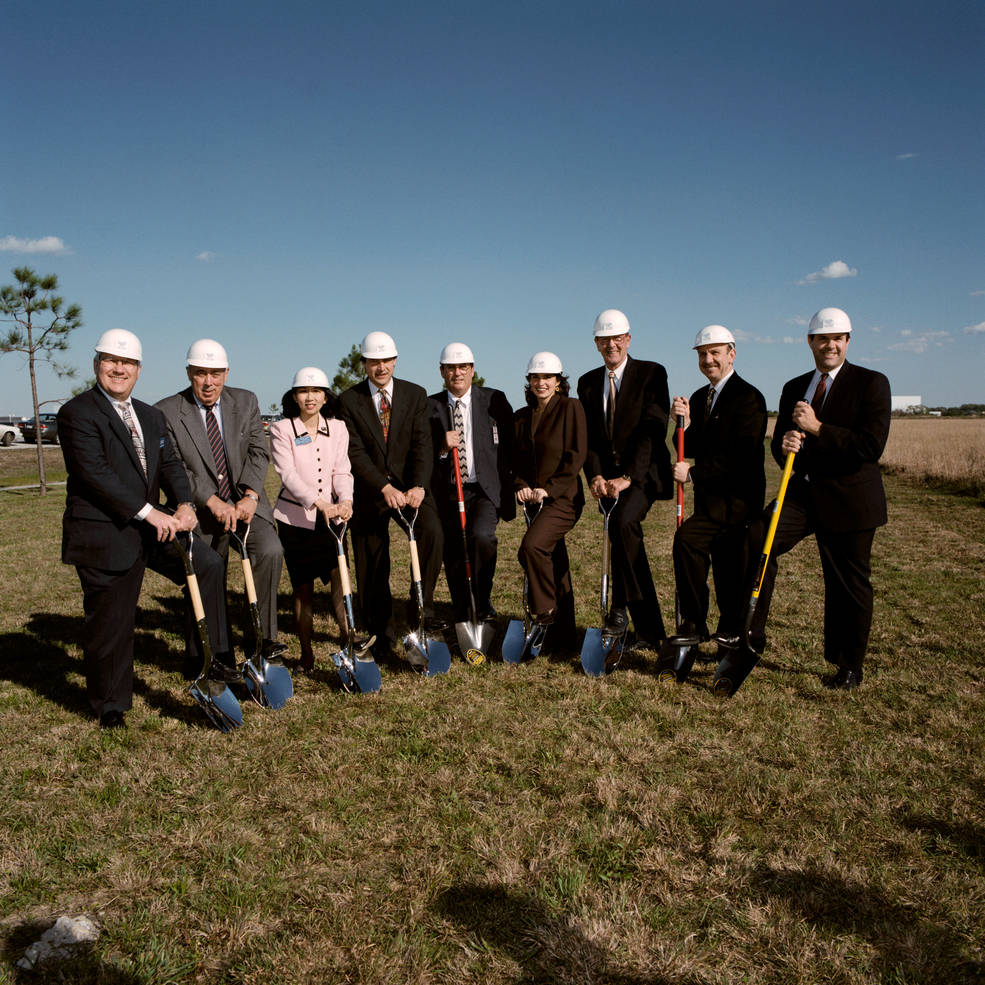
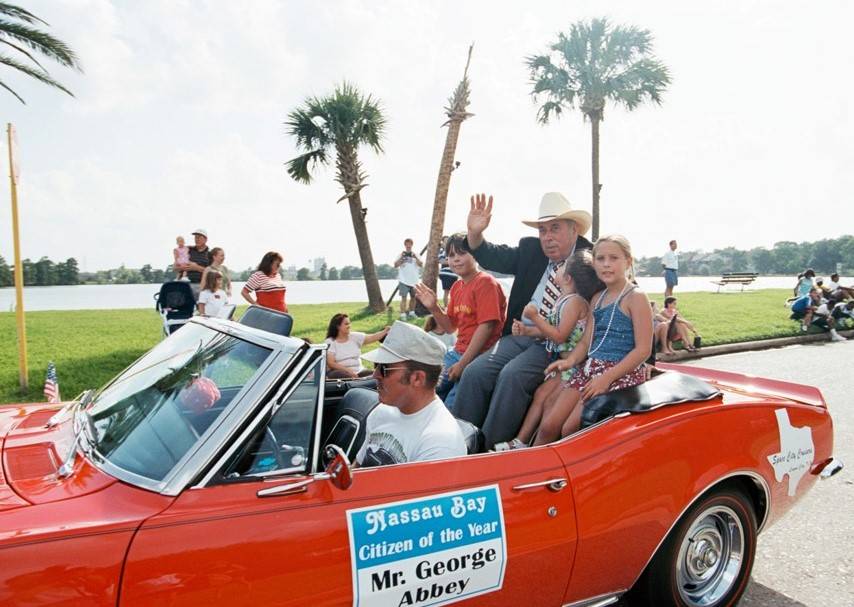
Left: Two Texas longhorns near JSC’s Rocket Park, part of the Texas Longhorn educational project organized by Johnson Space Center (JSC) Director George W.S. Abbey. Middle: Abbey, second from left, at the March 1998 groundbreaking for Clear Creek Intermediate School on JSC property. Right: Abbey riding in Nassau Bay’s 4th of July parade in 1999.
In addition to promoting safety, Abbey’s other passions as JSC director included community involvement, especially through education and outreach. In February 1997, Abbey spoke about the importance of education at the dedication of the Longhorn Project, a joint effort among JSC, the Clear Creek Independent School District, and the Houston Livestock Show and Rodeo, including the arrival of the first two Texas longhorn steers. The project provides local high-school students with a unique learning environment combining Western heritage with state-of-the-art technology. In another joint project with the Clear Creek school district, Abbey arranged for the building of an intermediate school on JSC property, with groundbreaking taking place in March 1998. In an effort to preserve NASA’s history and make it publicly available, in 1997 Abbey initiated JSC’s Oral History Project. By preserving existing interviews and conducting new ones with personnel involved at all levels of JSC’s activities through the years, the project documents spaceflight history in the words of those who created it. The ongoing project currently contains more than 1,400 transcripts of interviews, publicly available through the JSC History Office’s website.
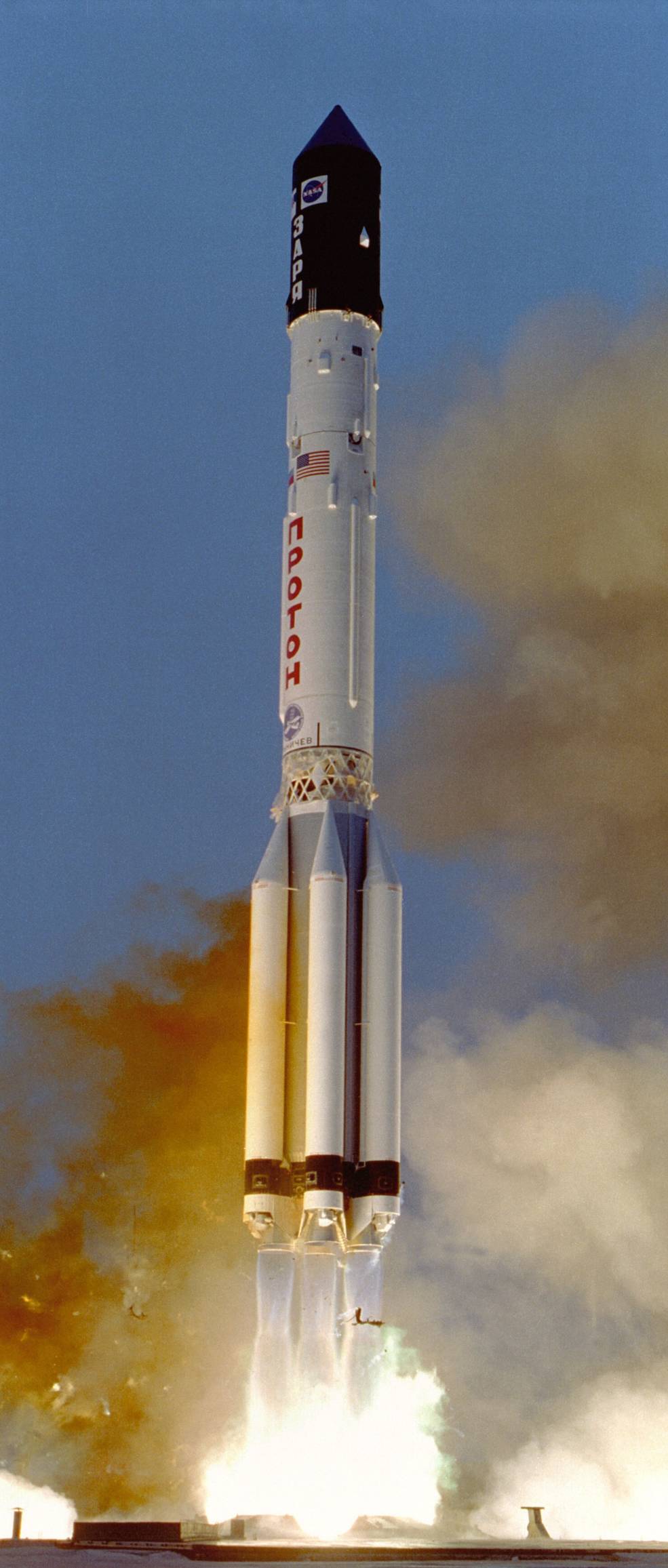
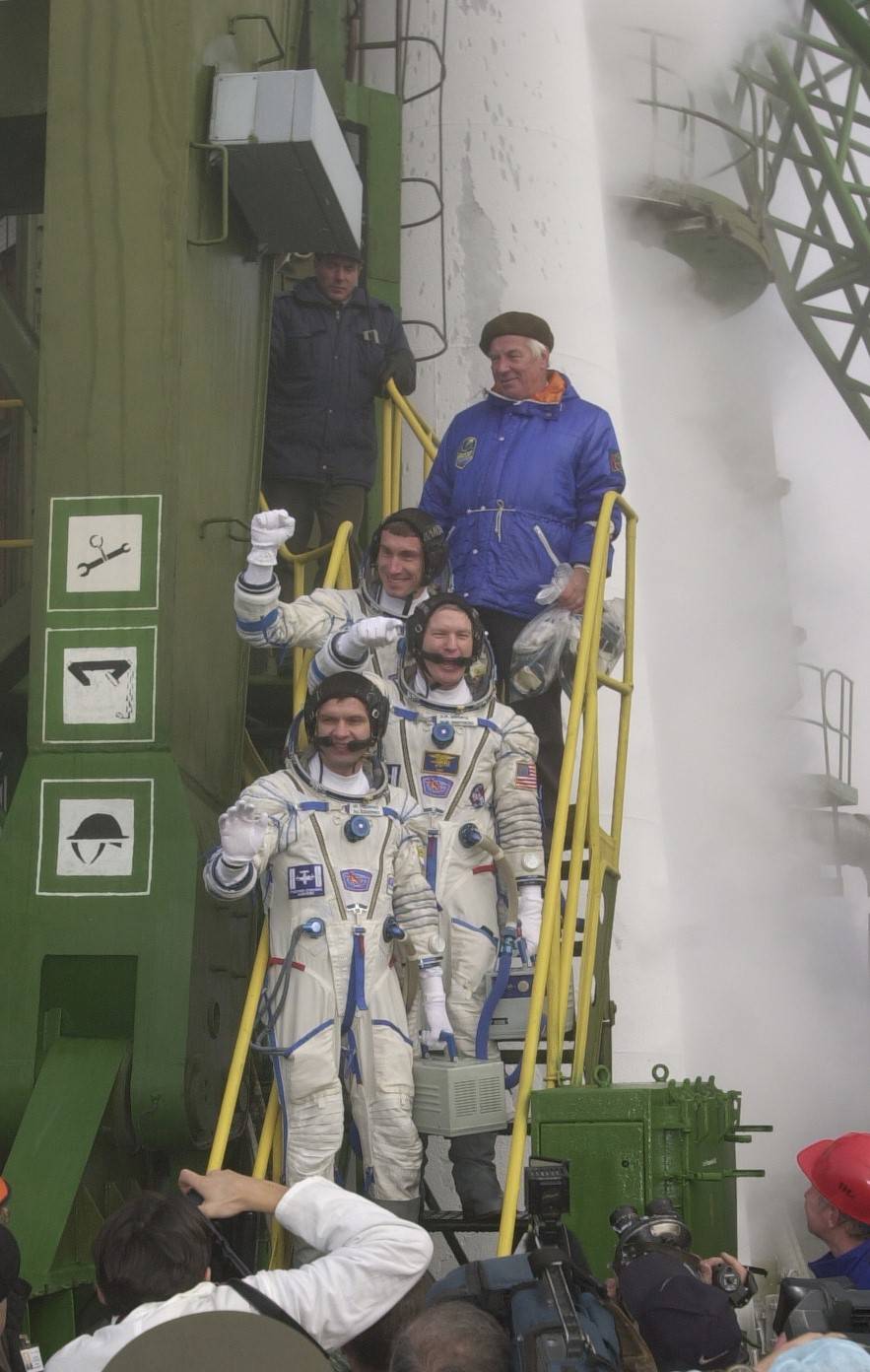
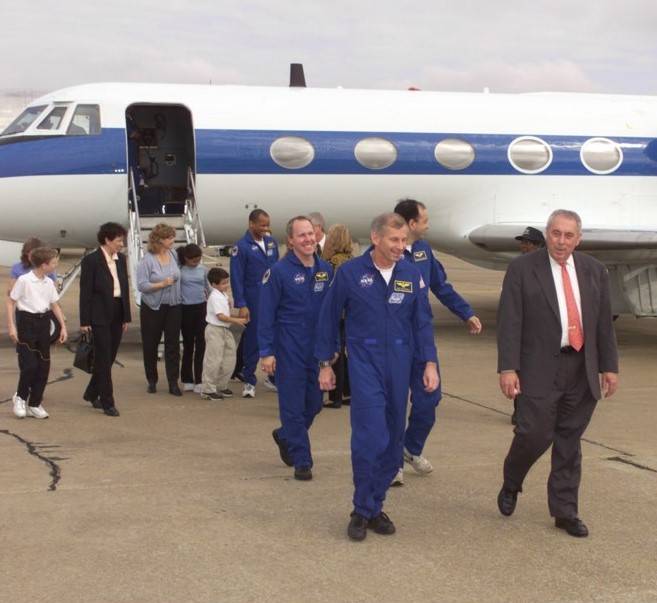
Left: Launch of the Zarya module from the Baikonur Cosmodrome in Kazakhstan. Middle: The Expedition 1 crew just before their launch to the space station. Right: At Ellington Field, Director of NASA’s Johnson Space Center in Houston George W.S. Abbey, right, welcomes home the STS-98 crew.
On Nov. 20, 1998, the first element of the International Space Station, a program Abbey championed for many years, finally took to the skies. Aptly named Zarya, Russian for dawn, the FGB module took off from the Baikonur Cosmodrome in Kazakhstan to usher in a new era in human spaceflight. Abbey and other NASA and Roscosmos officials were on hand to observe the launch. Three weeks later, space shuttle Endeavour lifted off from NASA’s Kennedy Space Center in Florida on the STS-88 mission to deliver the Unity Node 1 module to begin assembly of the orbital outpost. On Oct. 31, 2000, the Expedition 1 crew of Shepherd, Gidzenko, and Krikalev took off from Baikonur, marking the last day that humans weren’t living and working in space. They docked with the space station two days later, and the facility has been occupied continuously ever since. On Feb. 20, 2001, Abbey welcomed home the crew of STS-98 to Ellington Field in Houston. During their mission, they delivered the U.S. Laboratory module Destiny to the space station. It was the last time Abbey welcomed a crew home as JSC director.
Effective Feb. 23, 2001, NASA Administrator Goldin named Abbey as his senior assistant for international affairs. Goldin named Roy S. Estess, director of NASA’s Stennis Space Center in Mississippi, as acting JSC director. In November 2002, Abbey announced his retirement, effective Jan. 3, 2003, ending his 37-year career at NASA. He joined Rice University’s Baker Institute for Public Policy as a senior fellow in space policy and continues to be active in space-related activities. He was inducted into the Texas Aviation Hall of Fame’s Class of 2020. In November 2021, JSC Director Vanessa E. Wyche honored Abbey by naming Rocket Park in his honor, in tribute to his decades of dedicated work on behalf of the nation’s human spaceflight program.
The next installment in this series will cover JSC’s next three directors who led the center during the first dozen years of the new millennium.
John Uri
NASA Johnson Space Center

